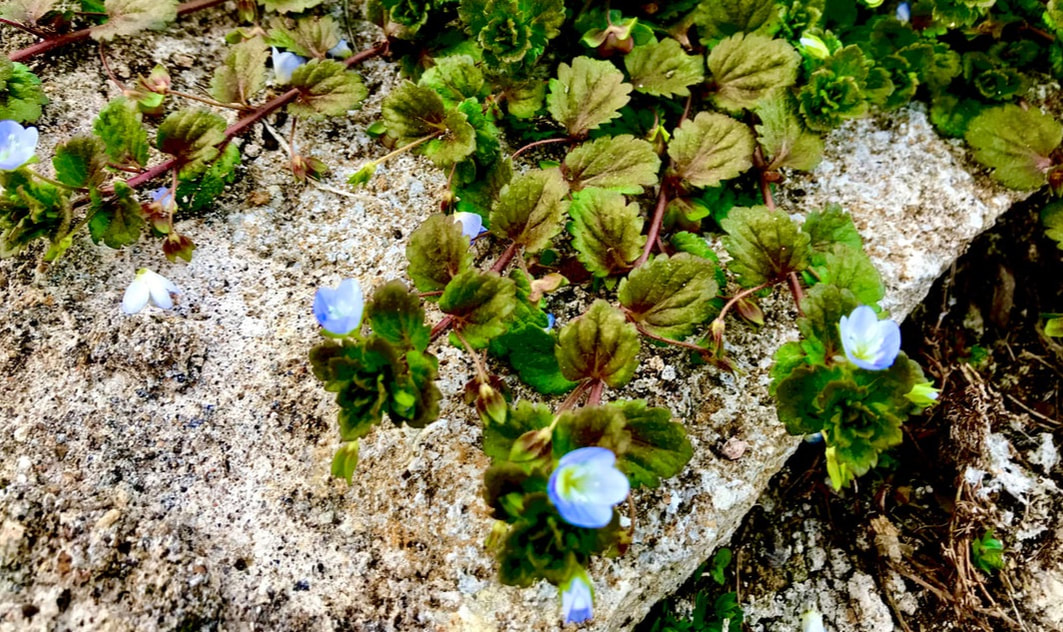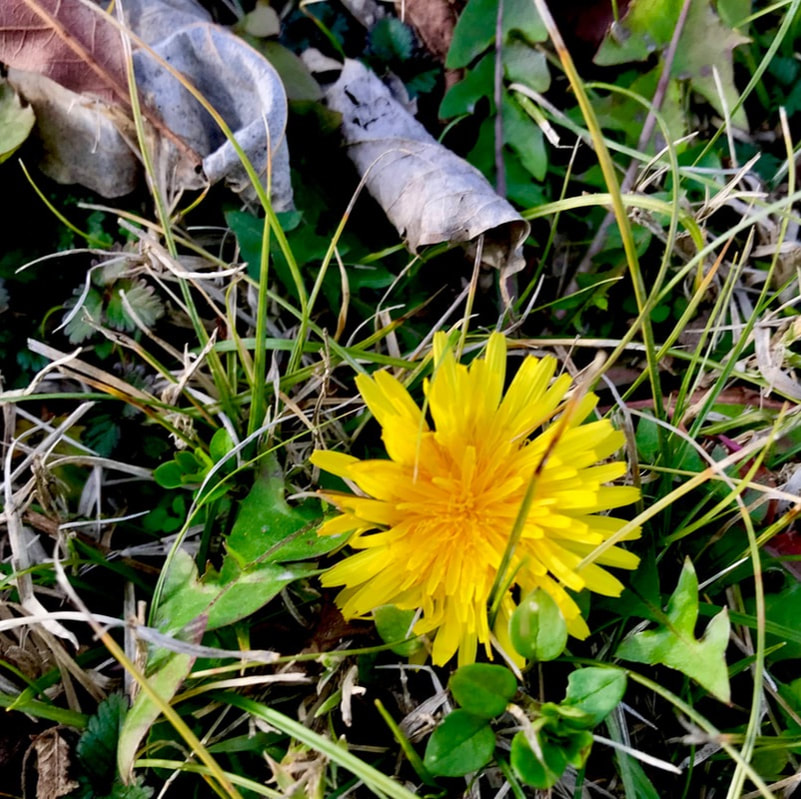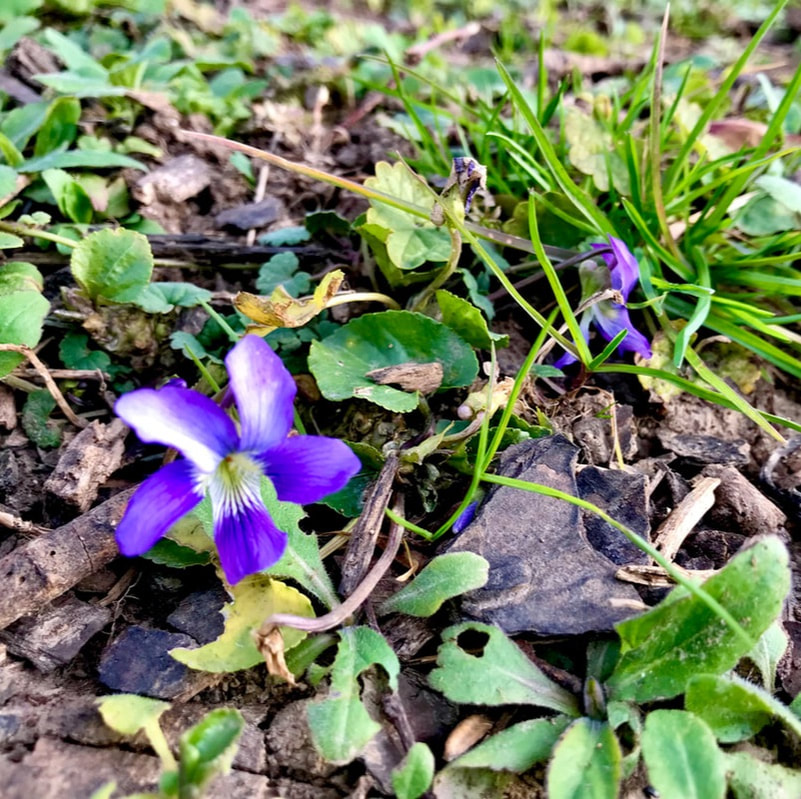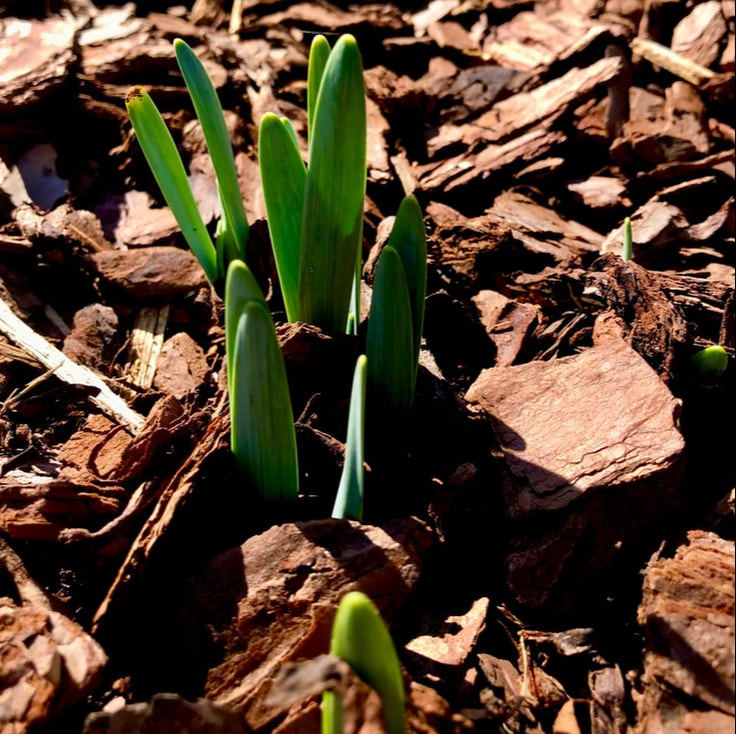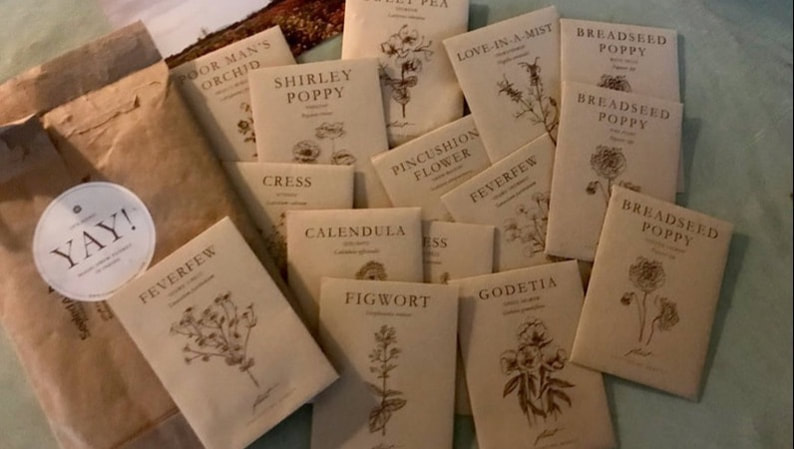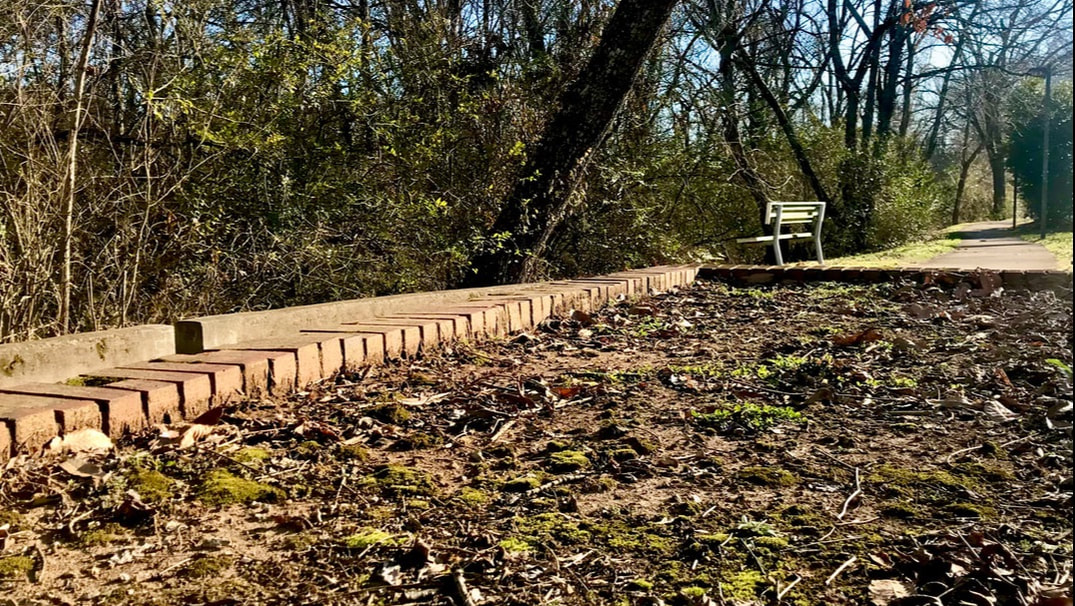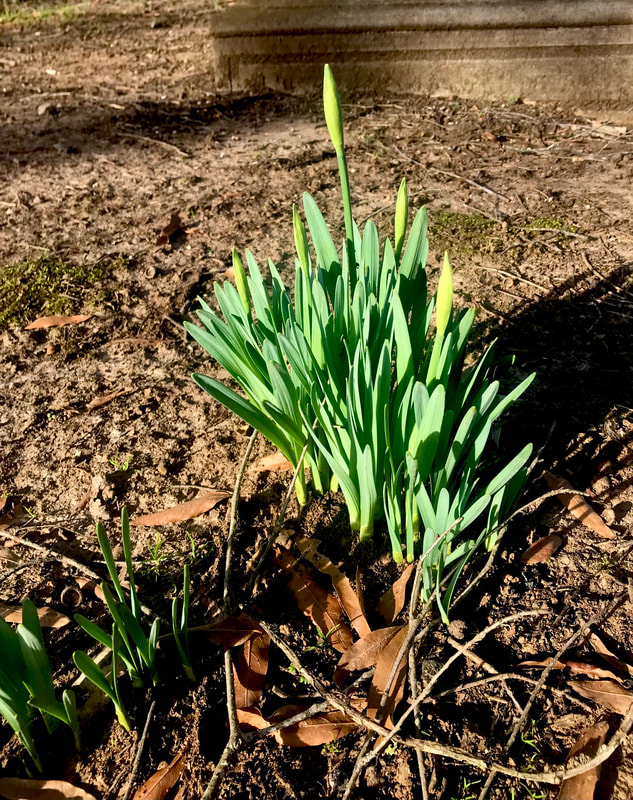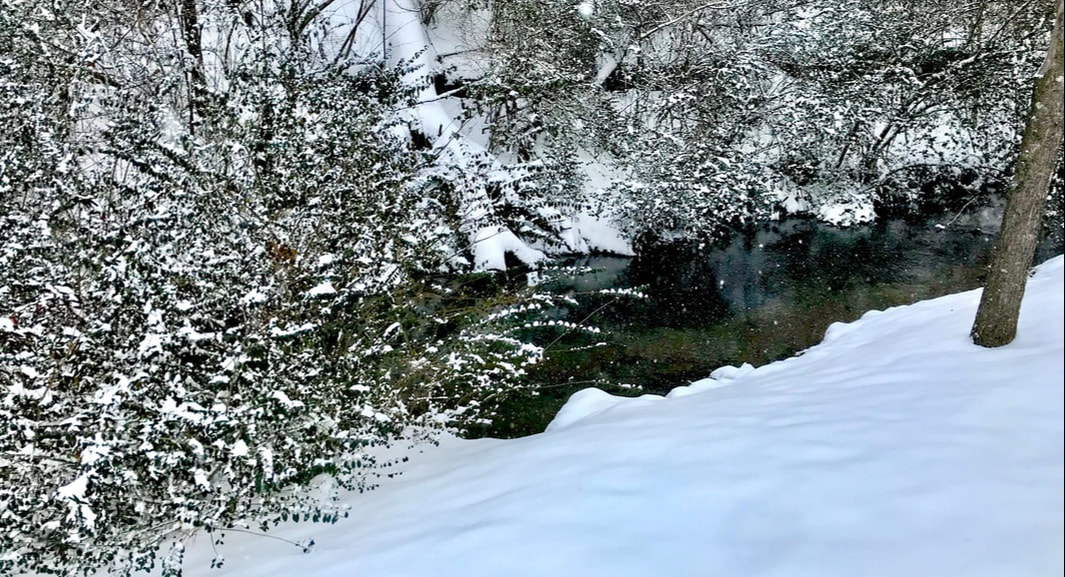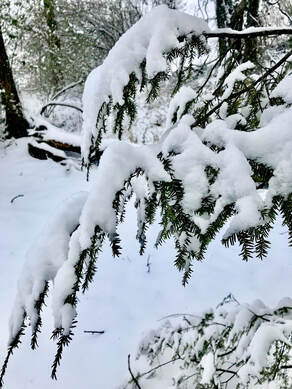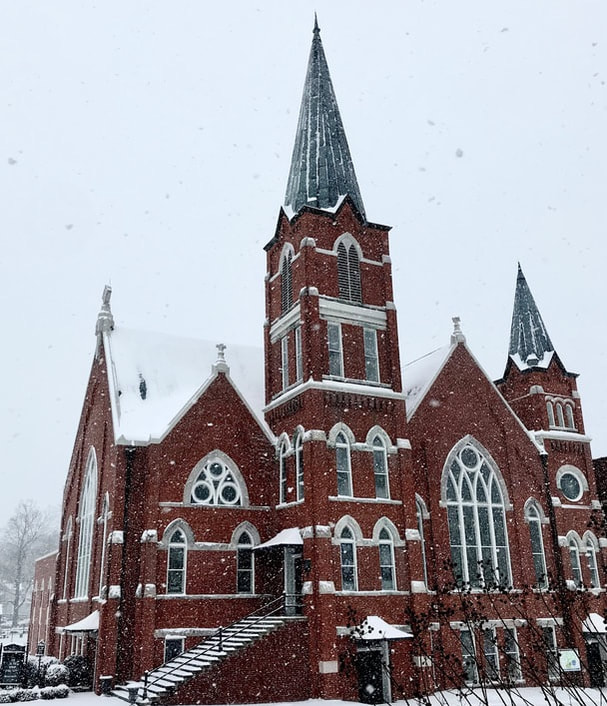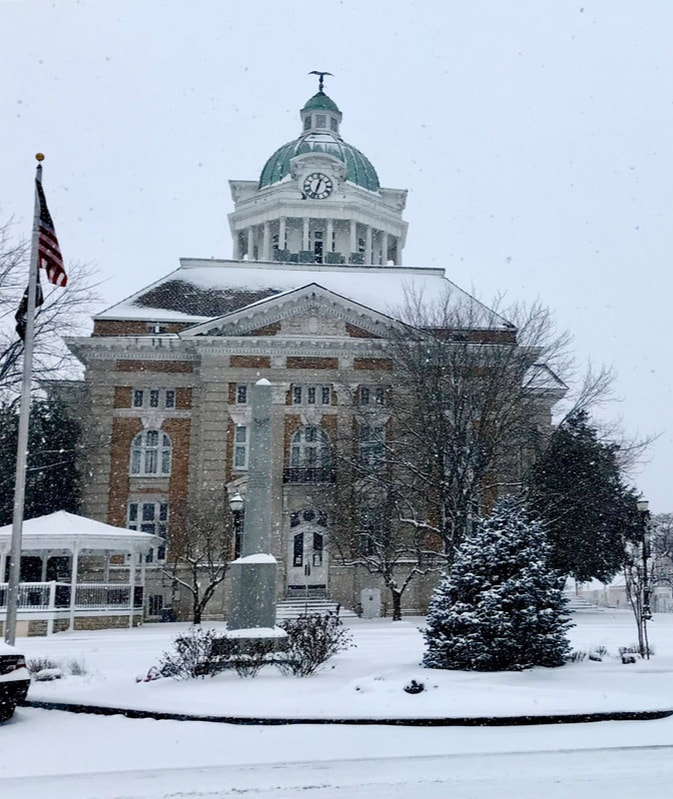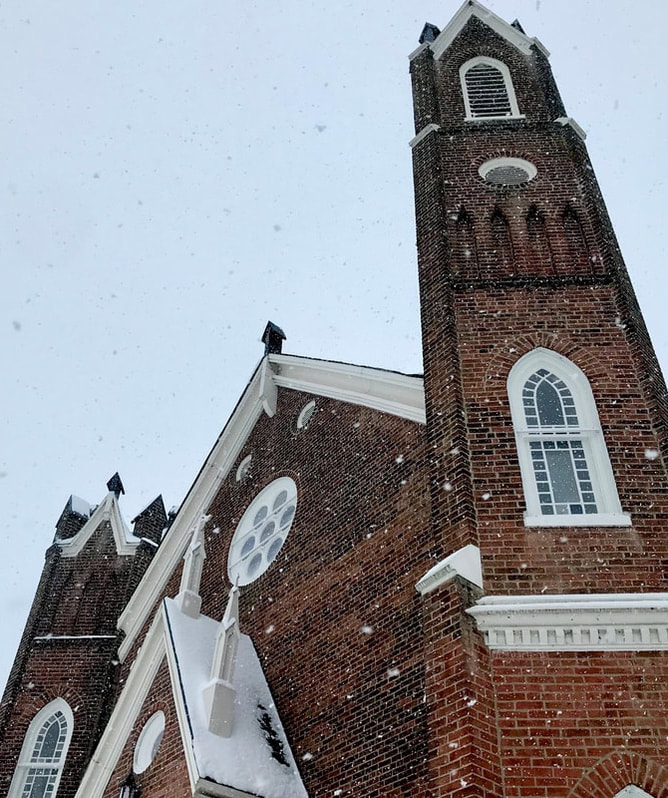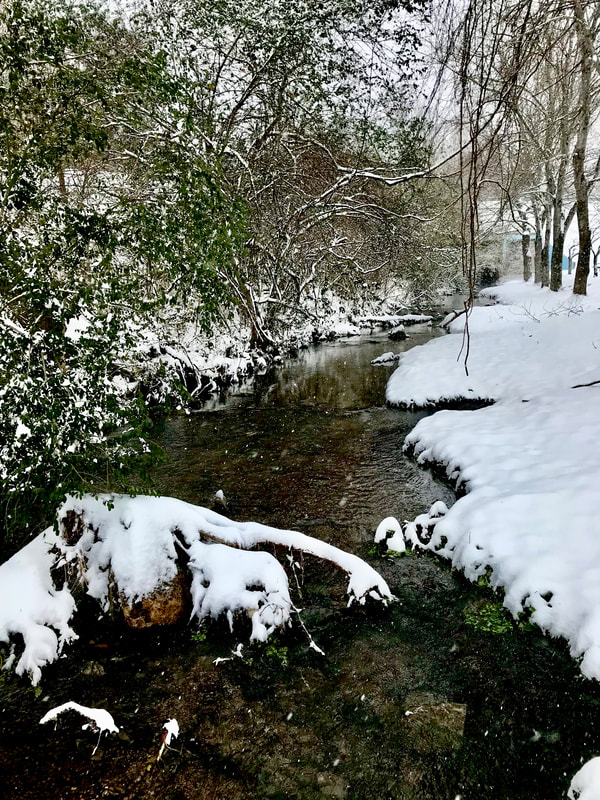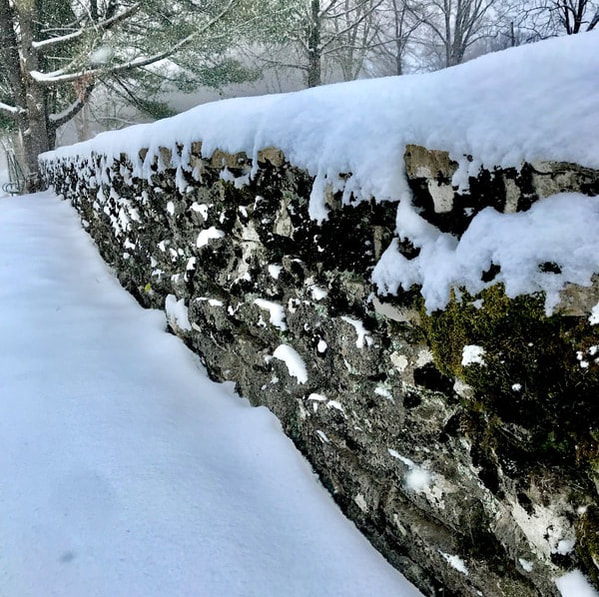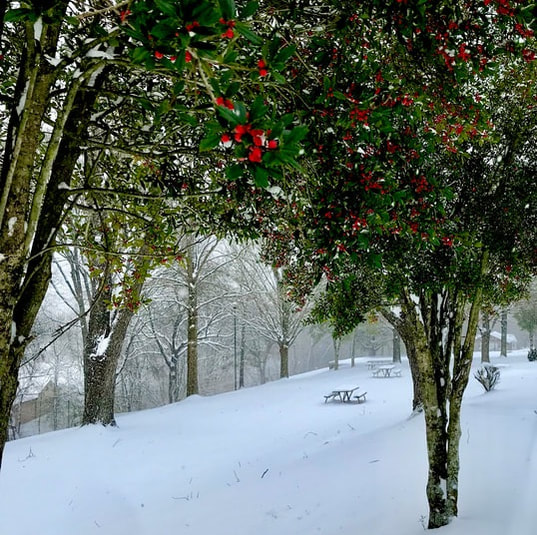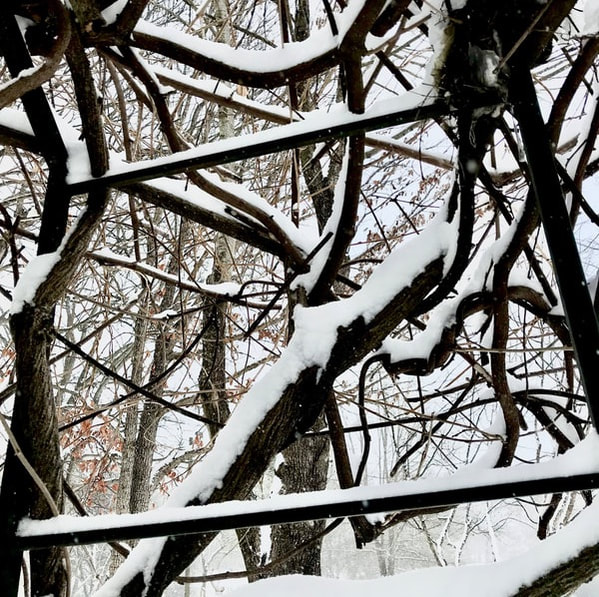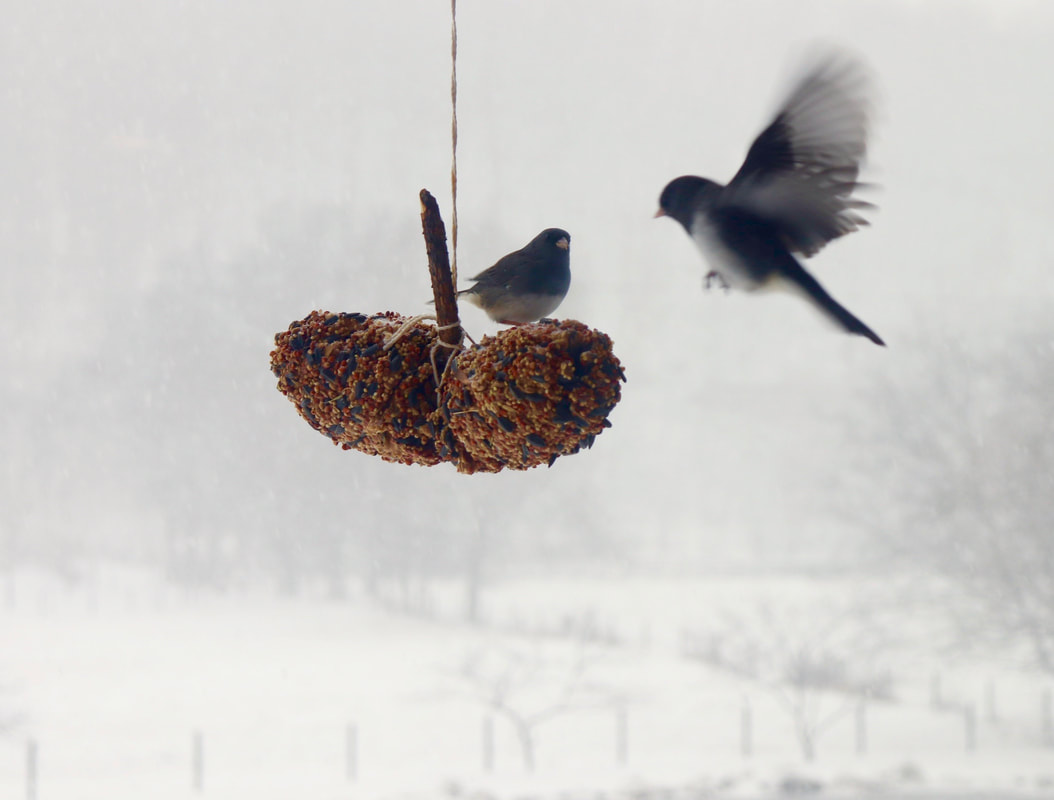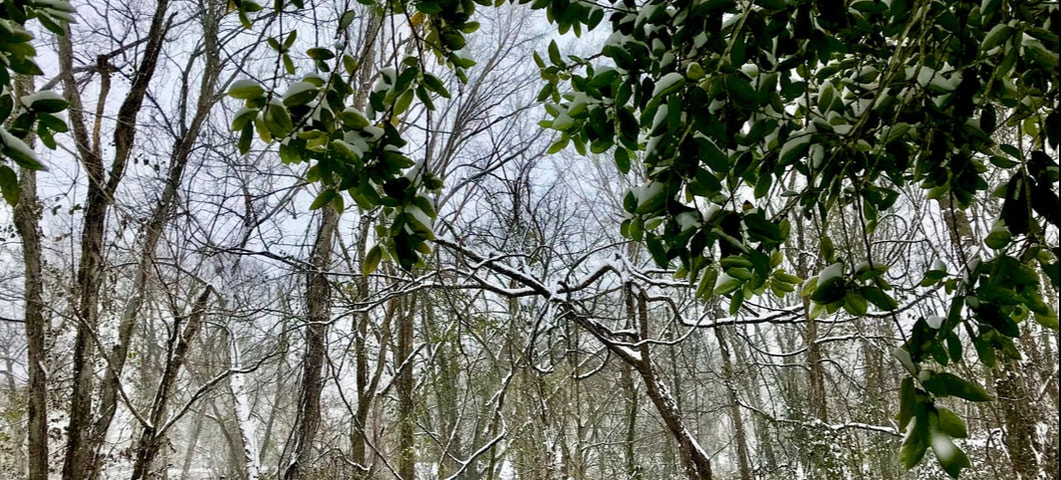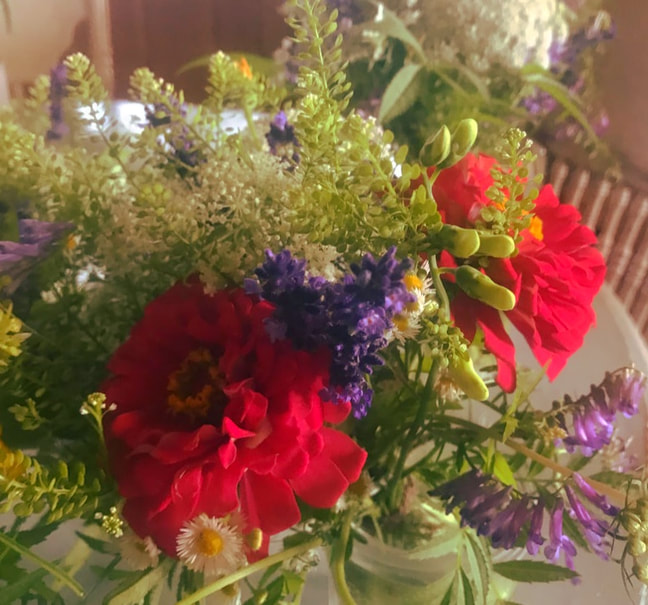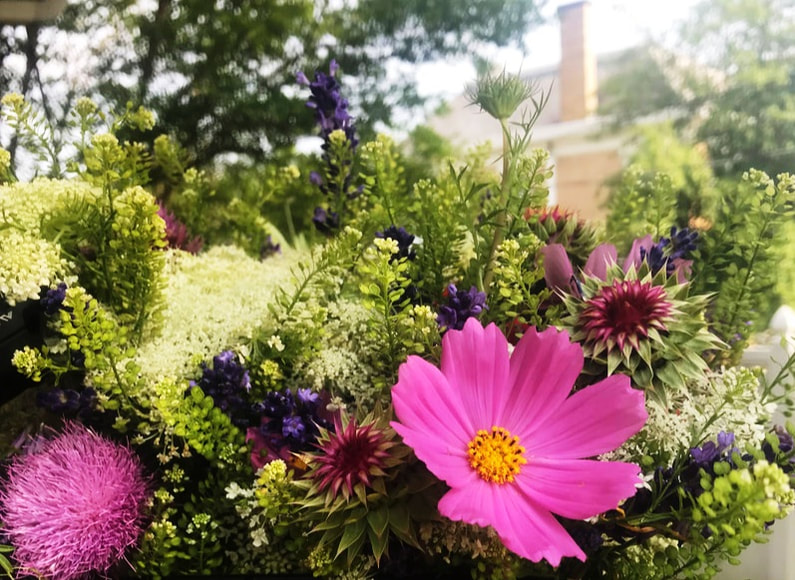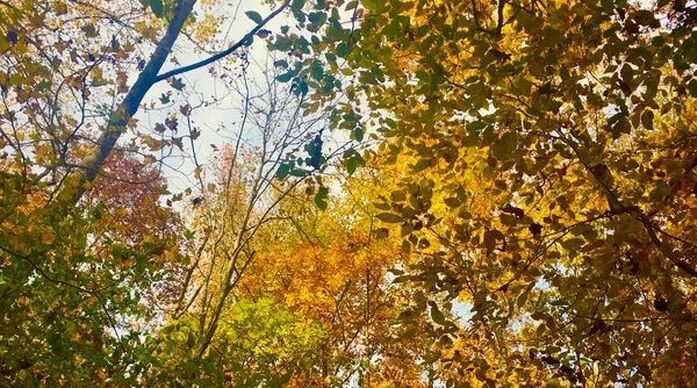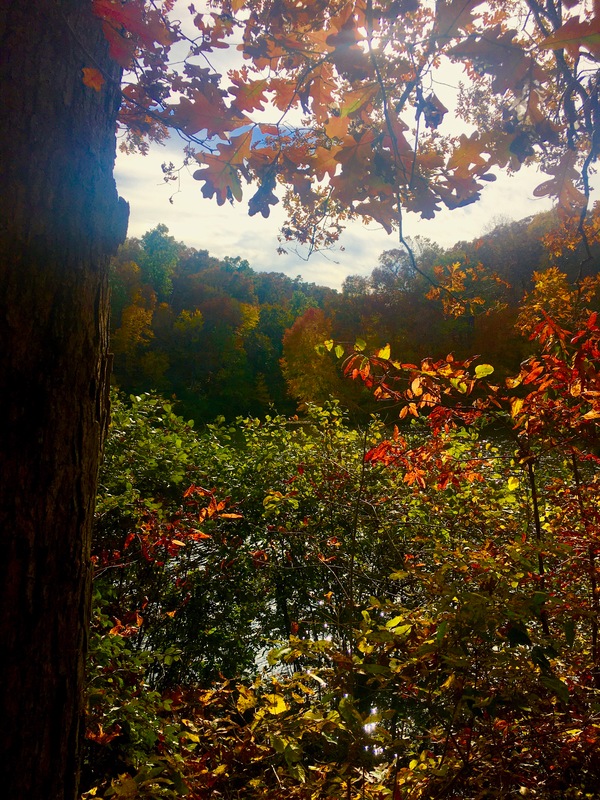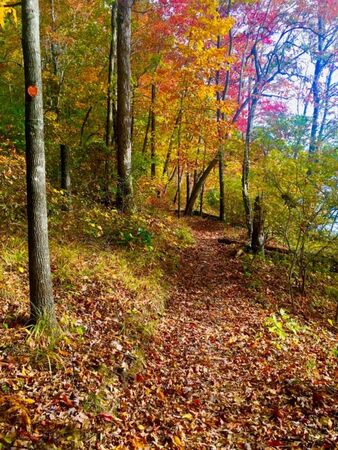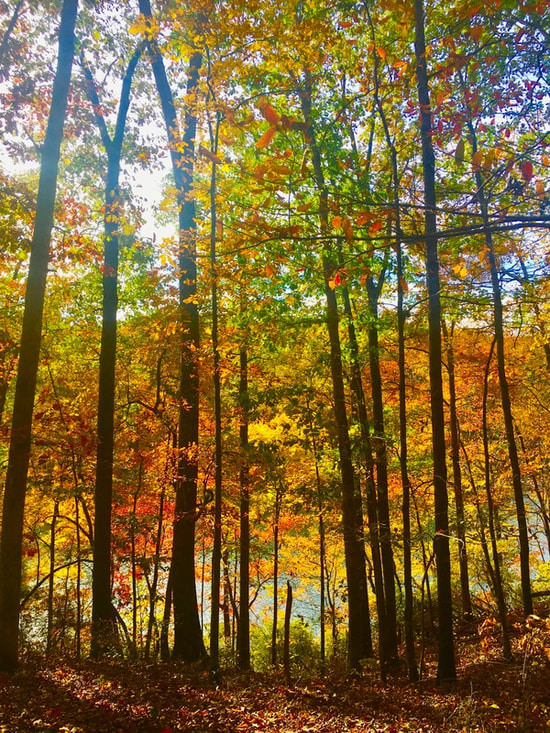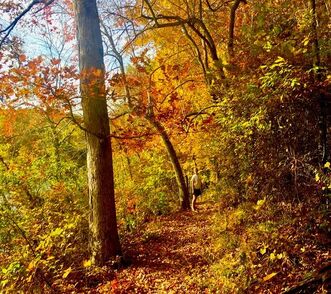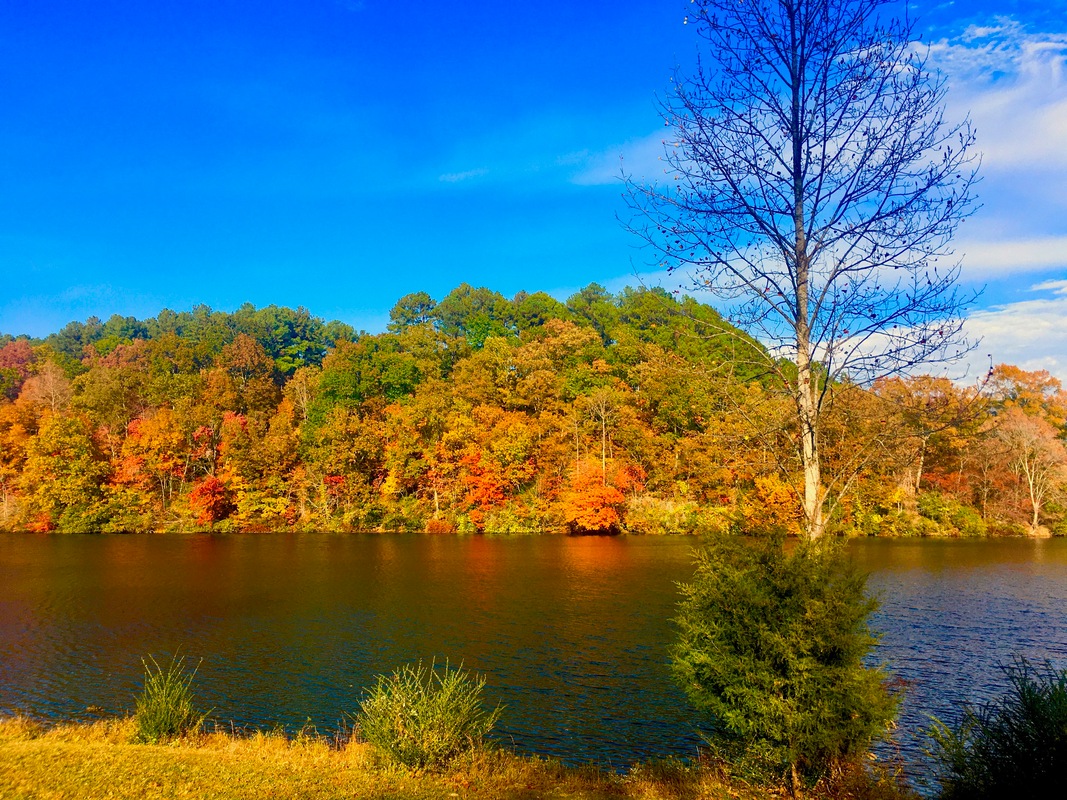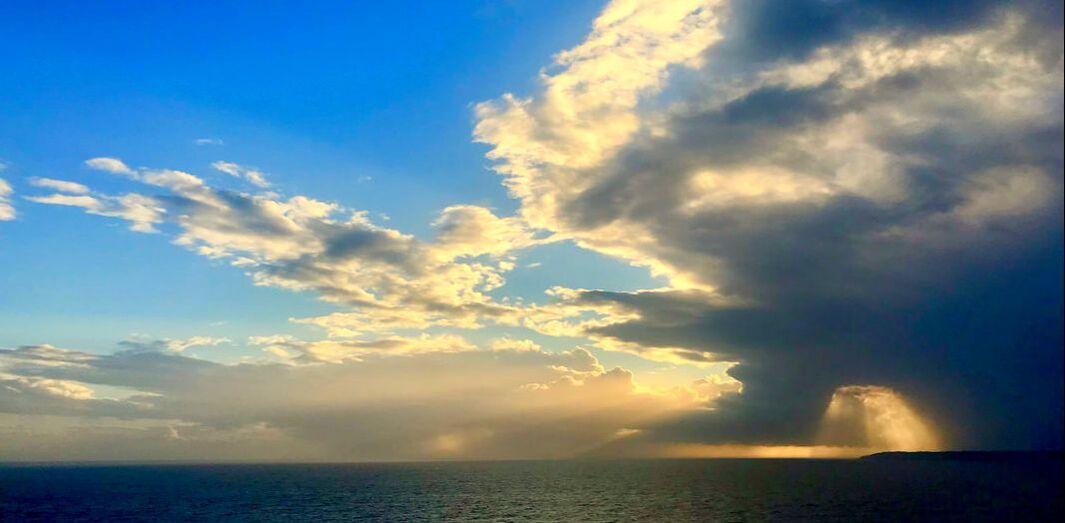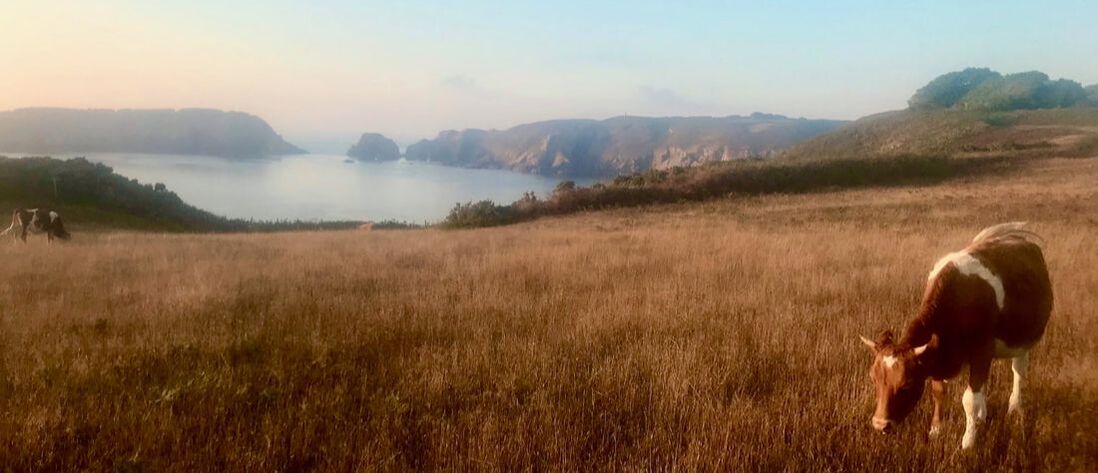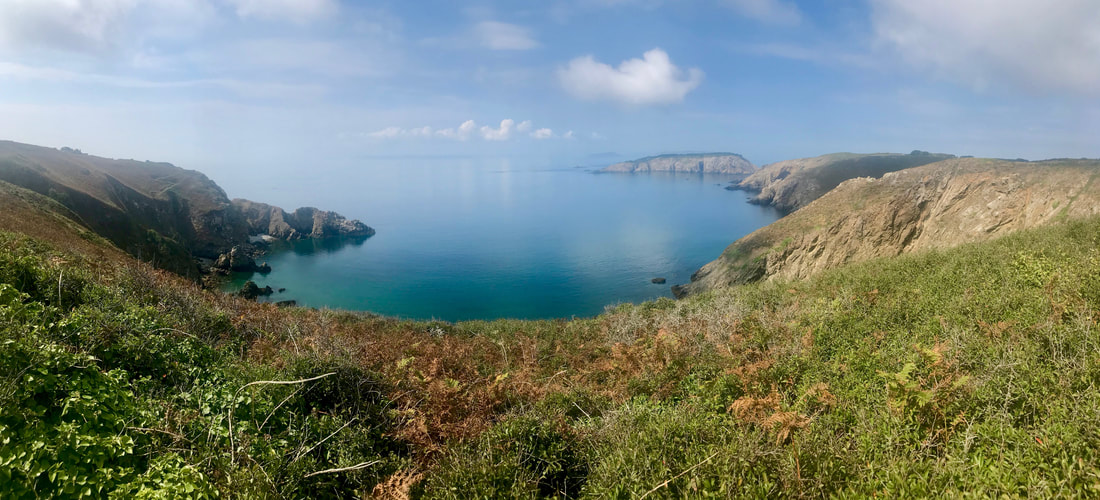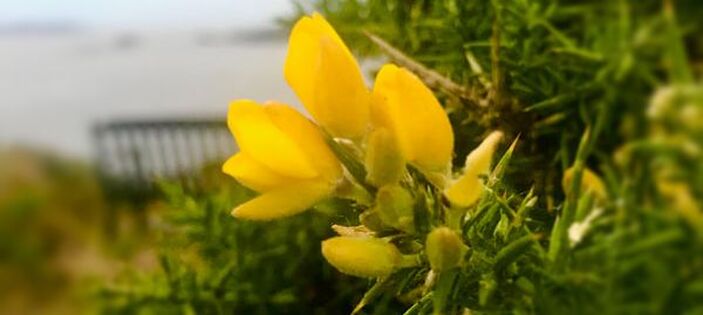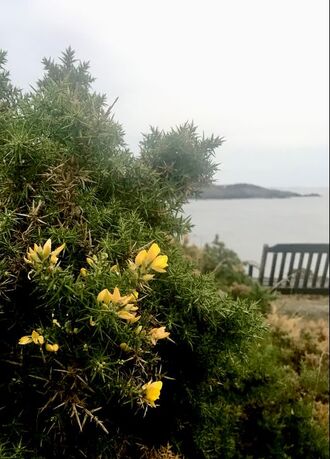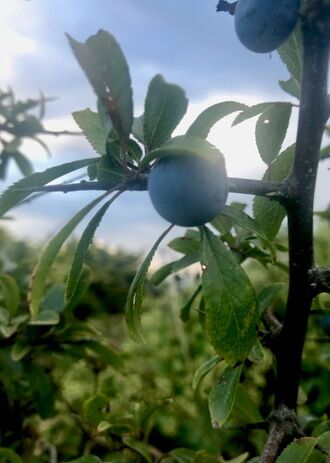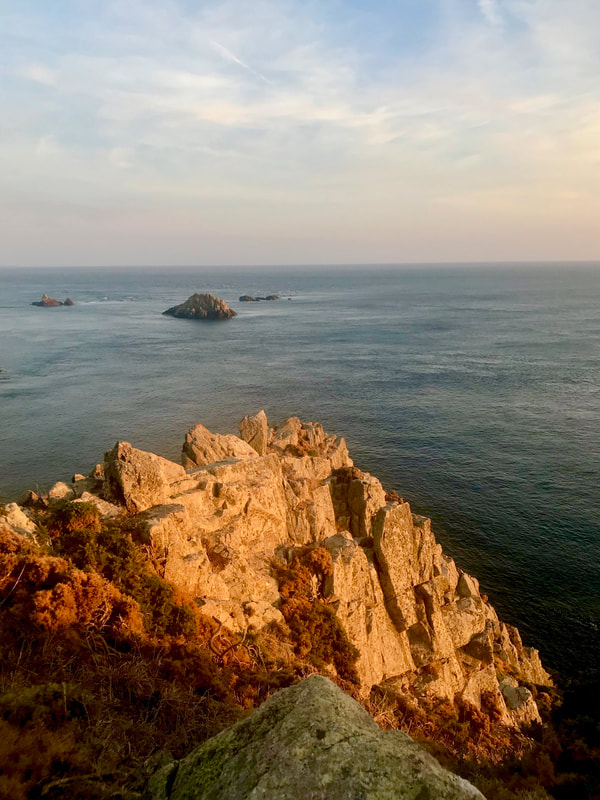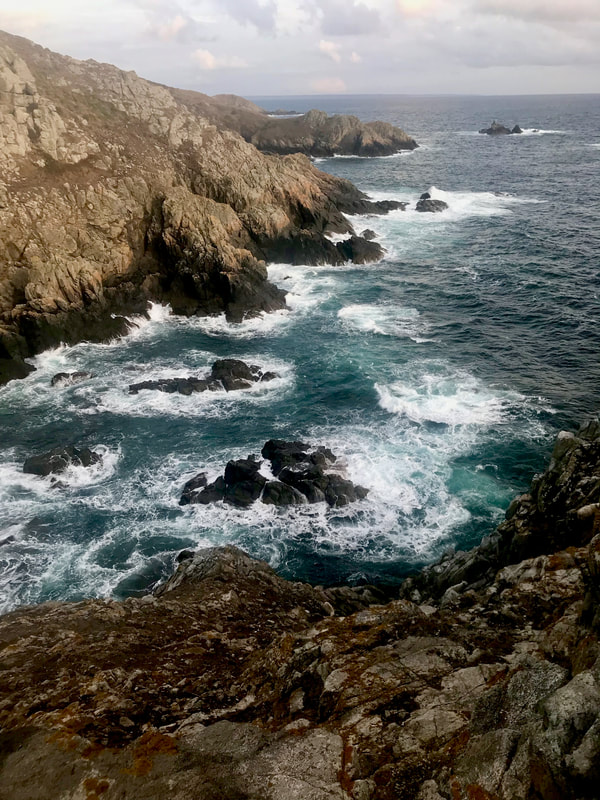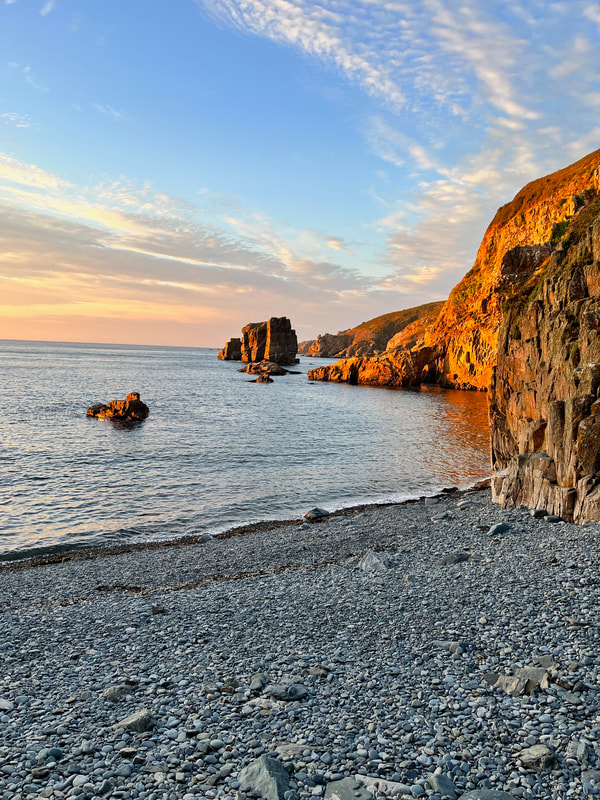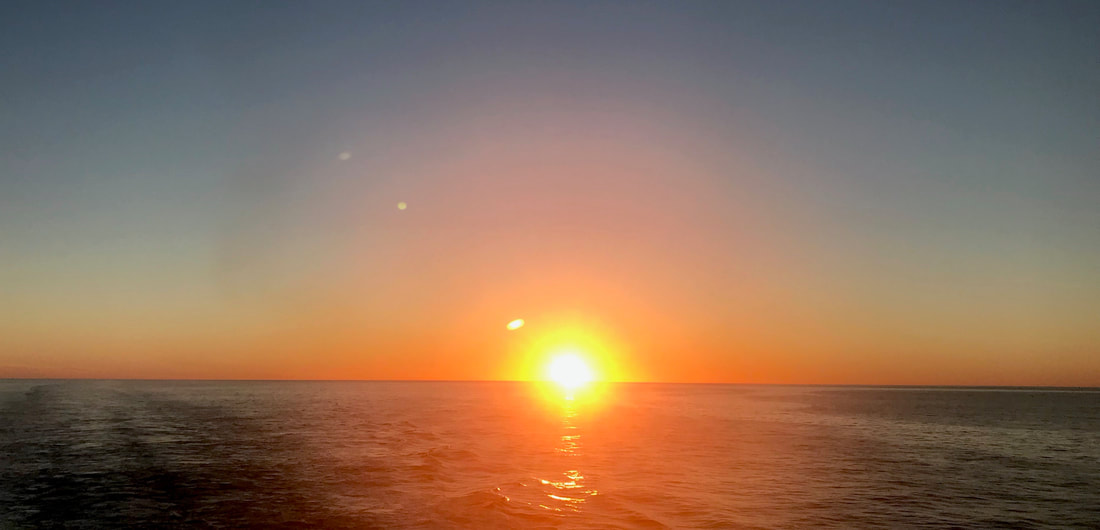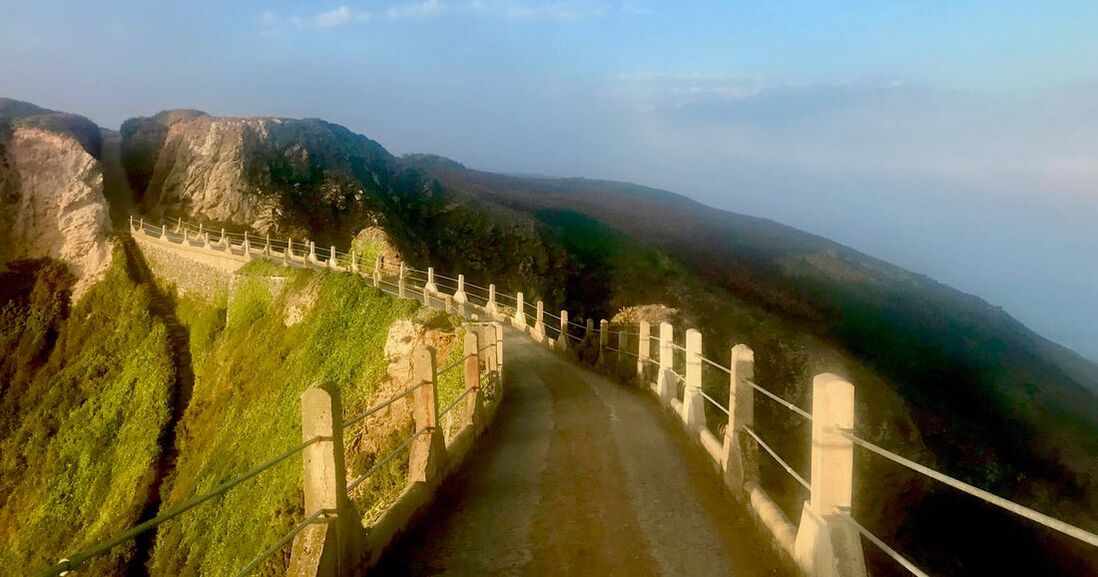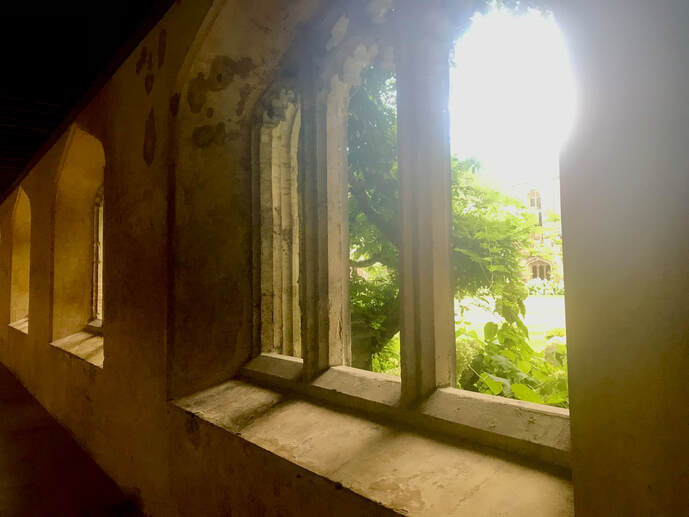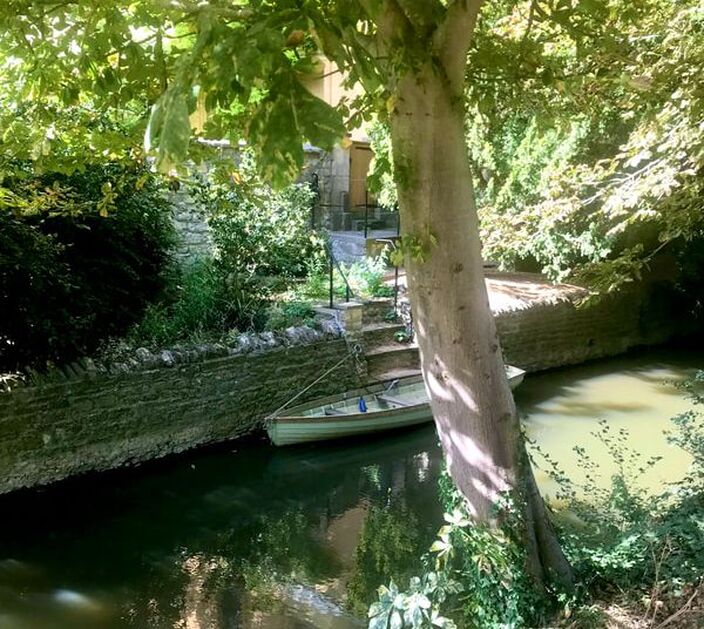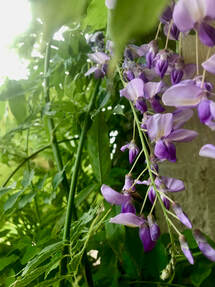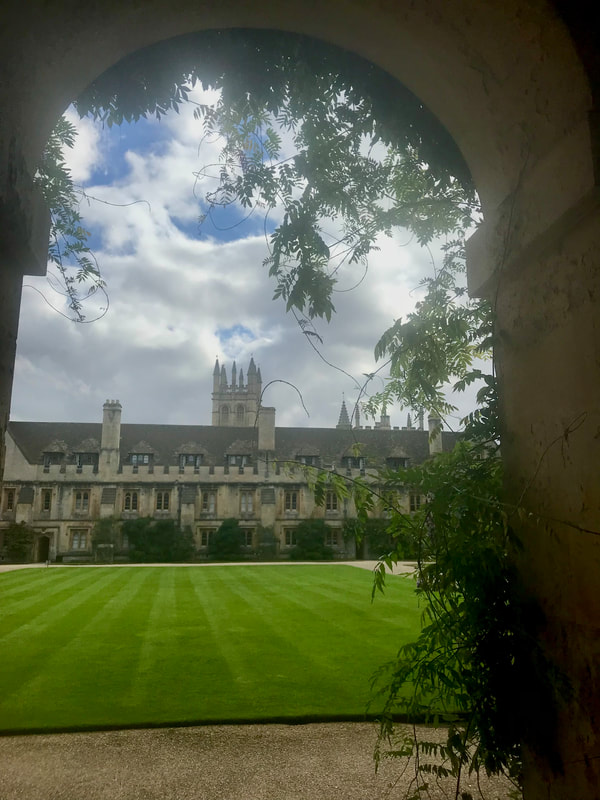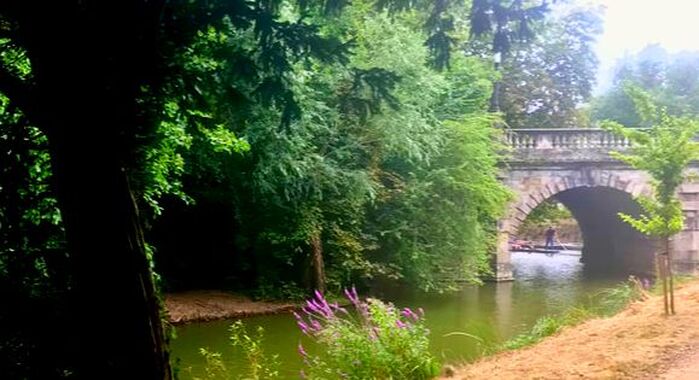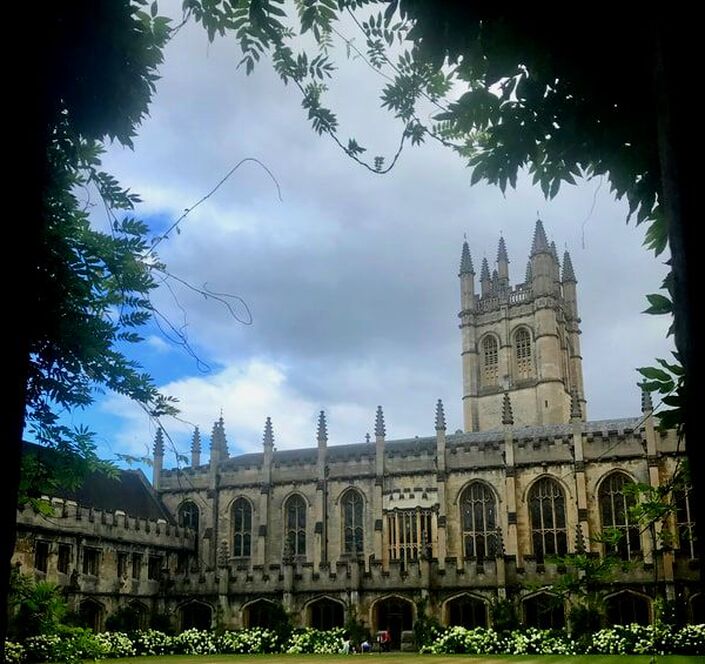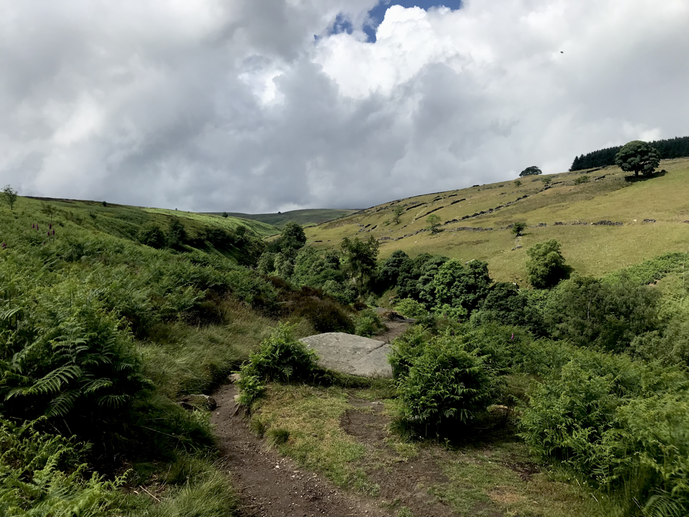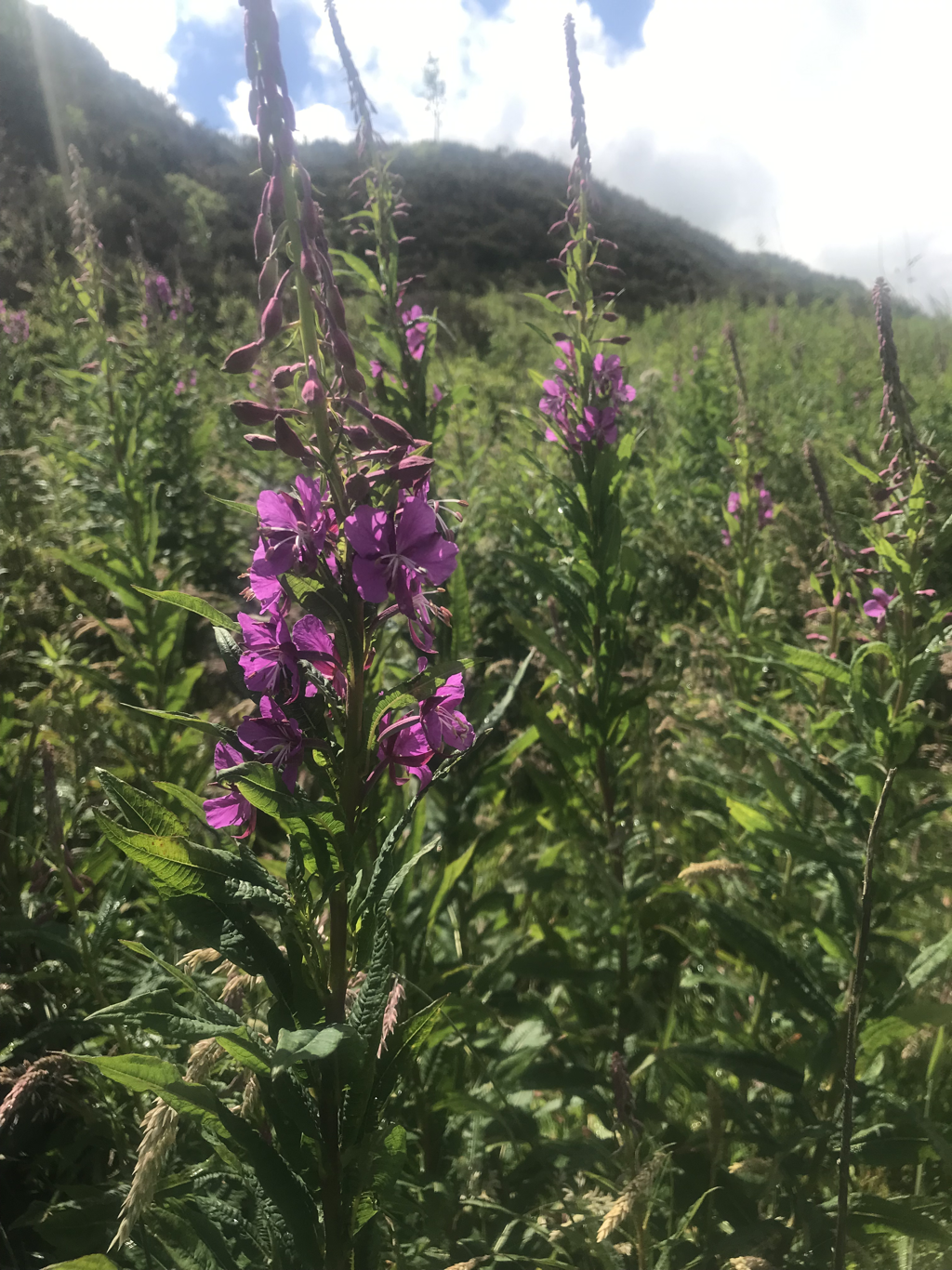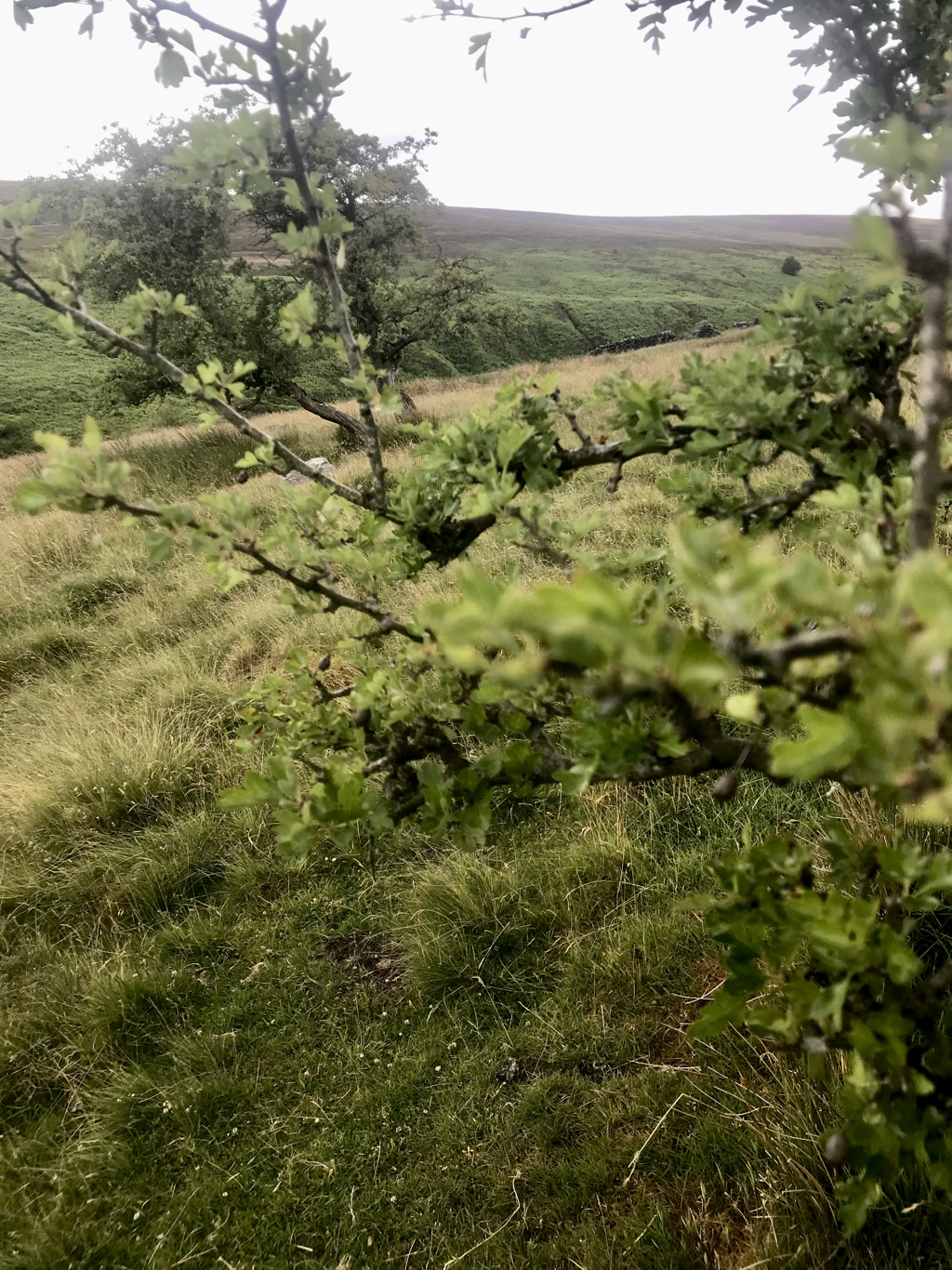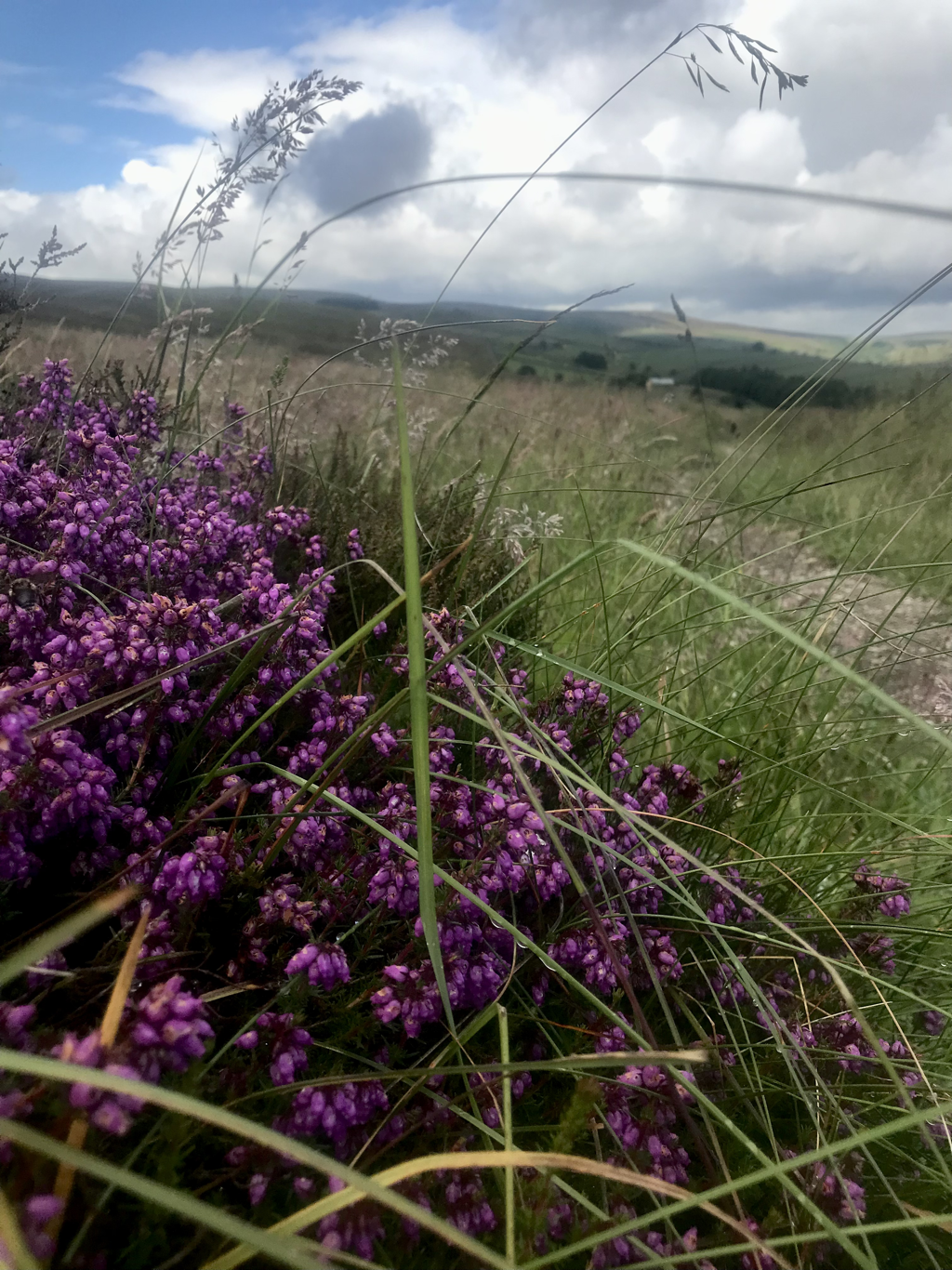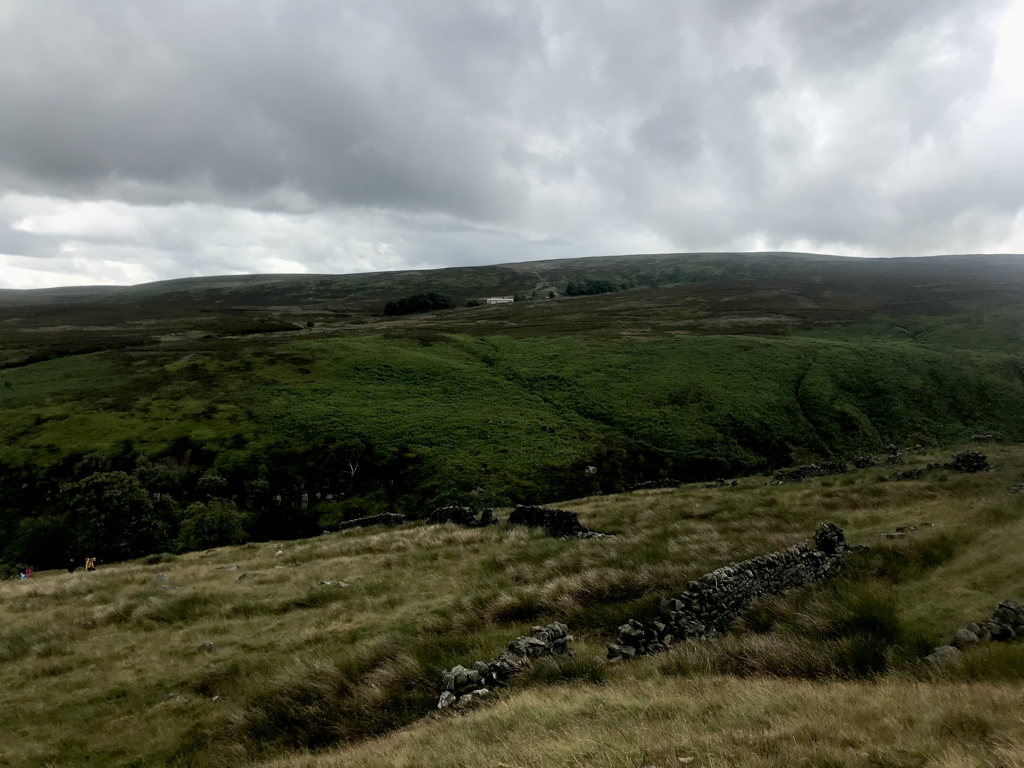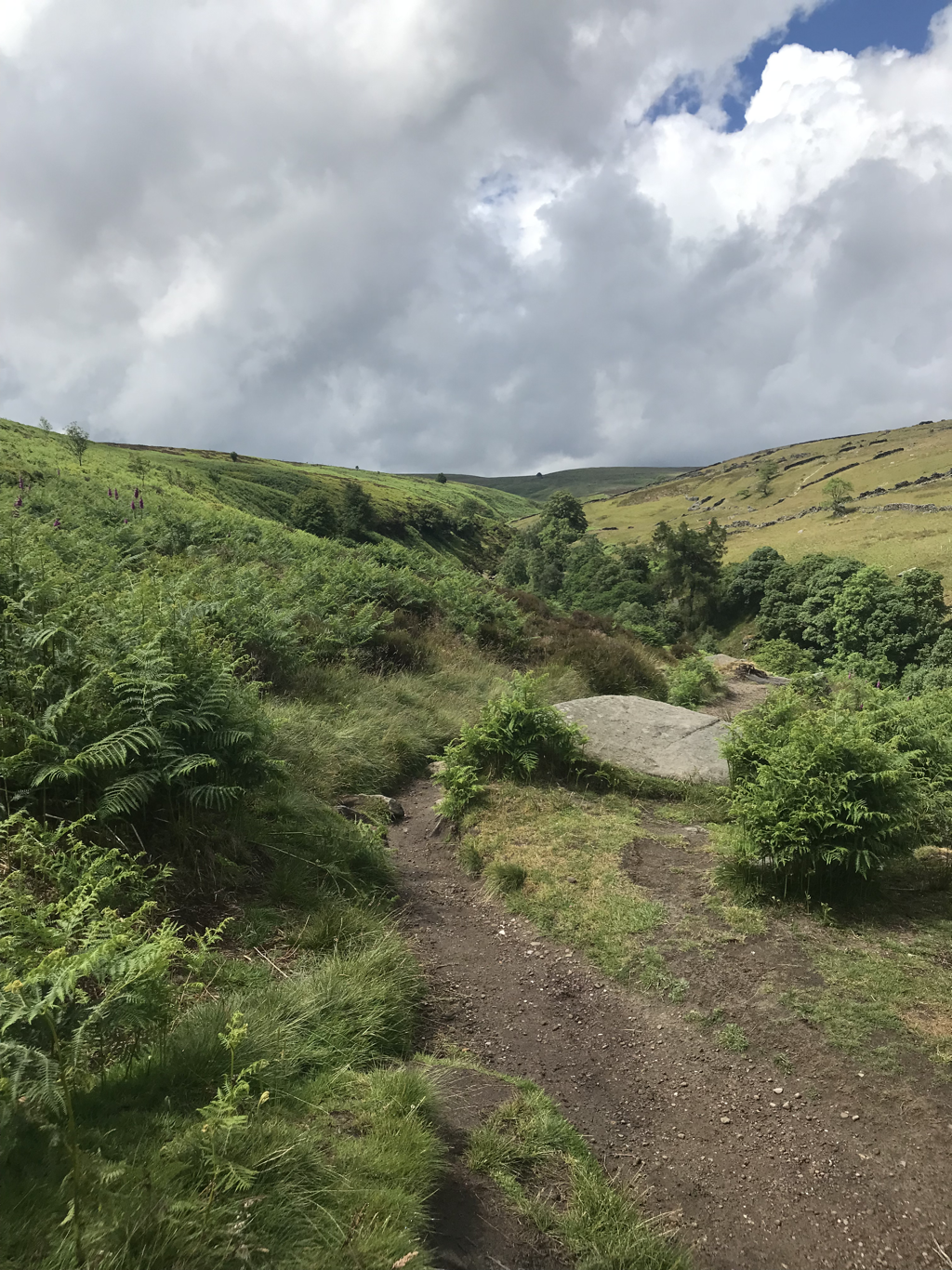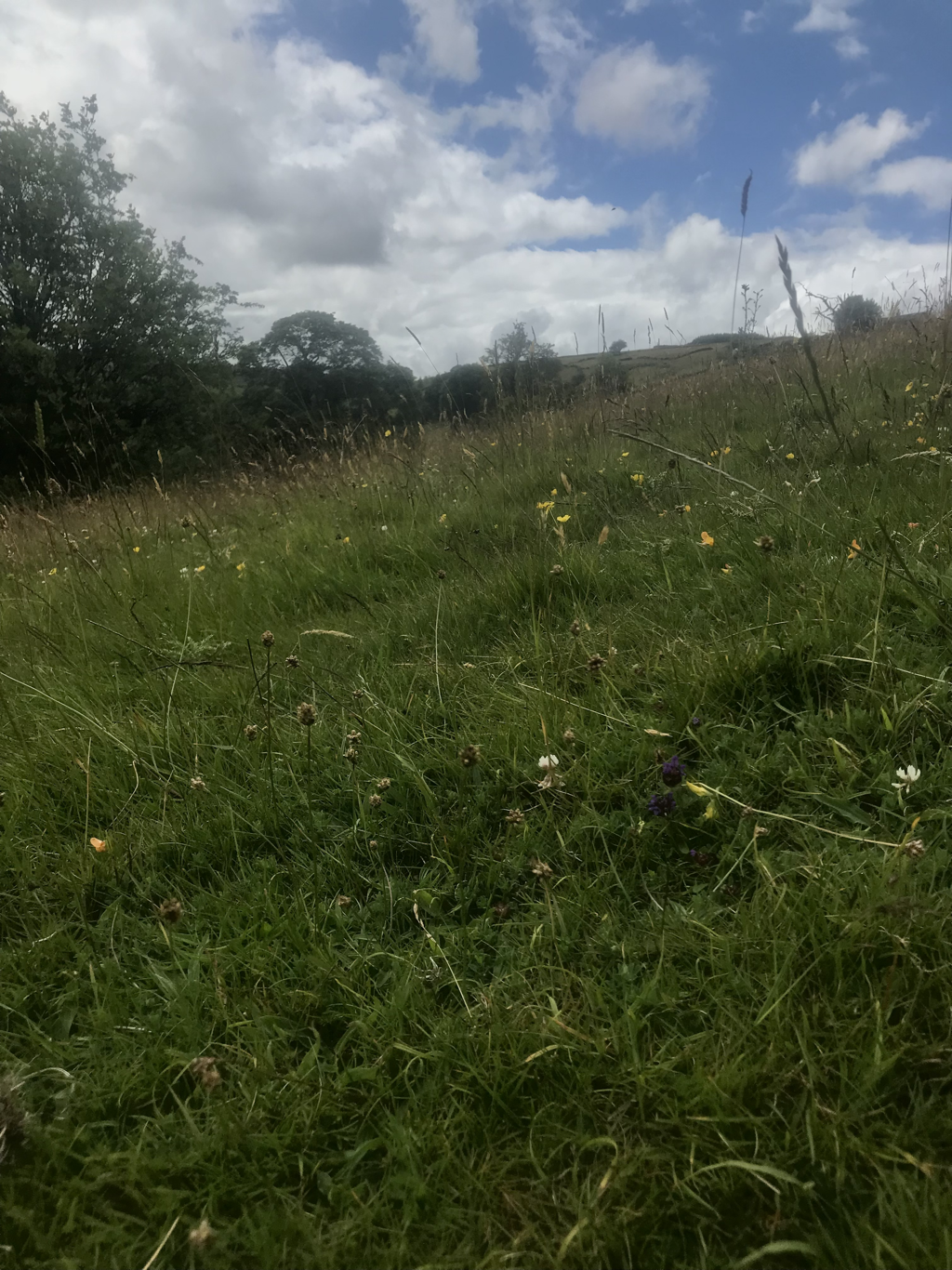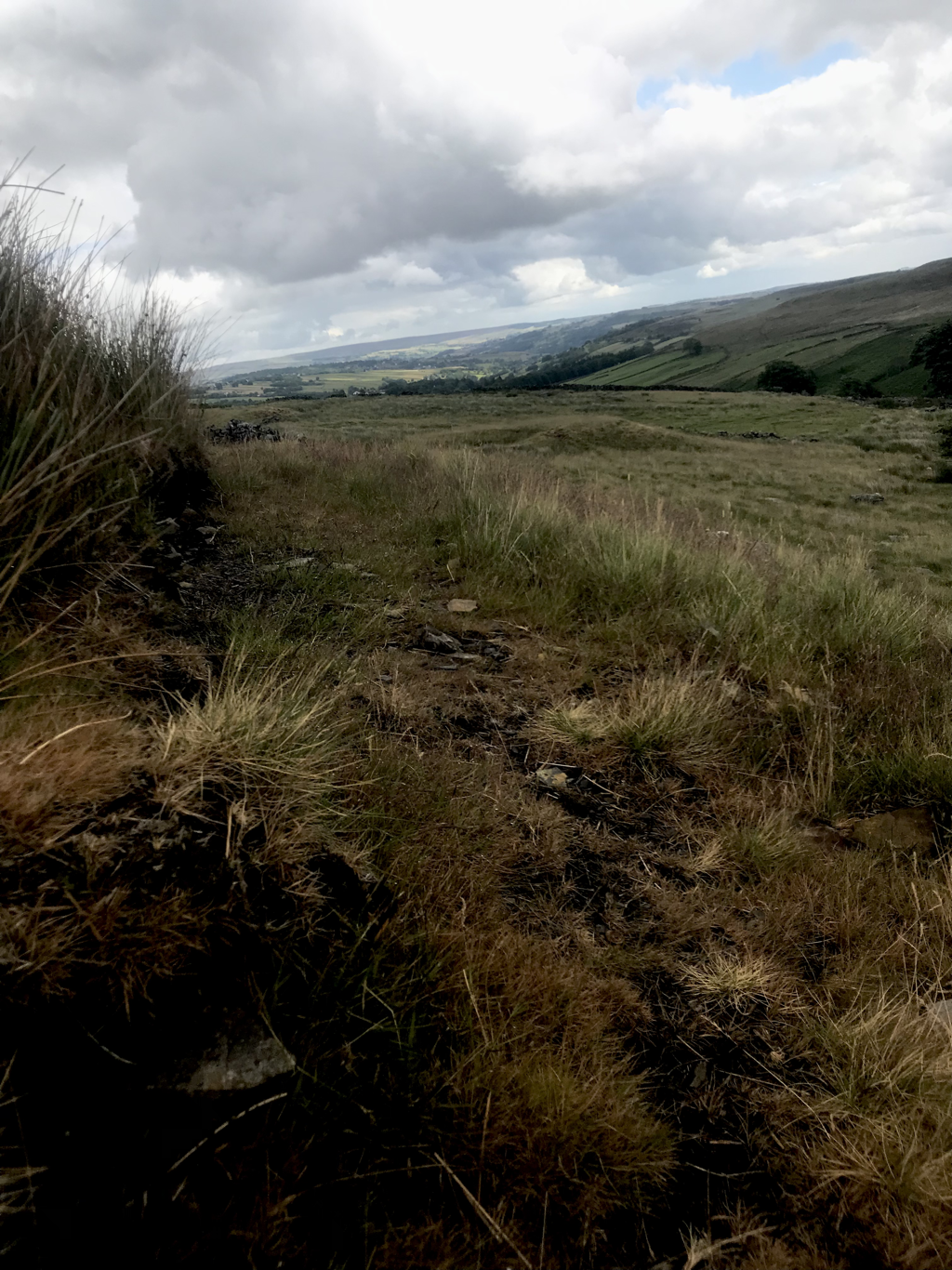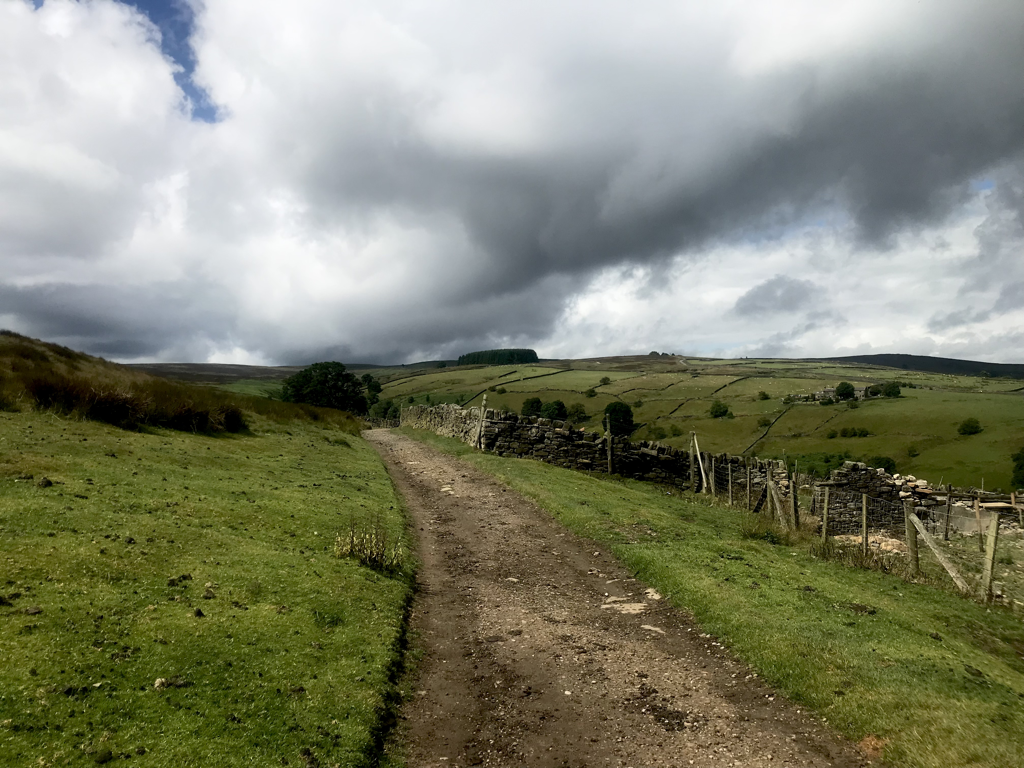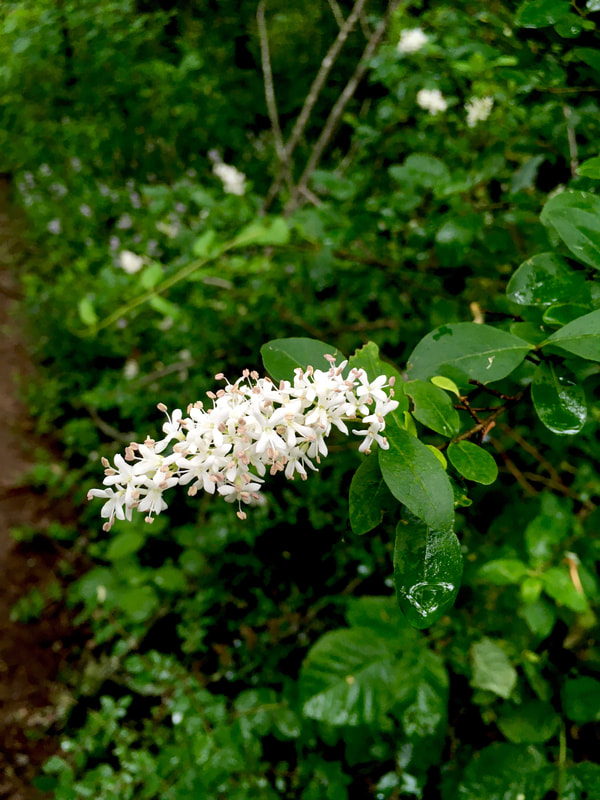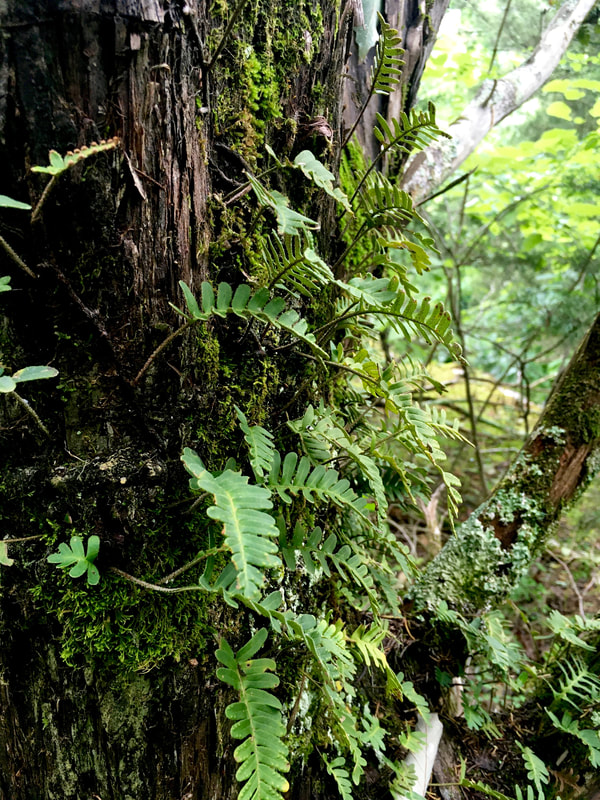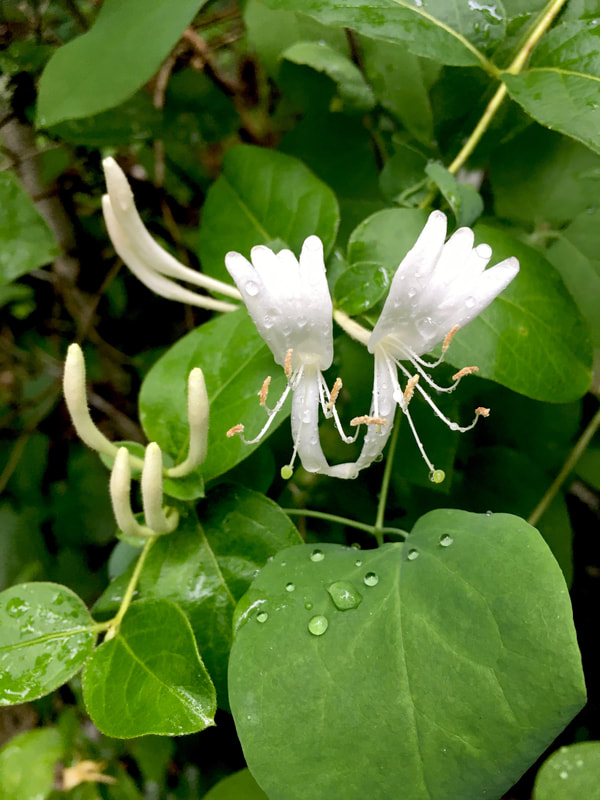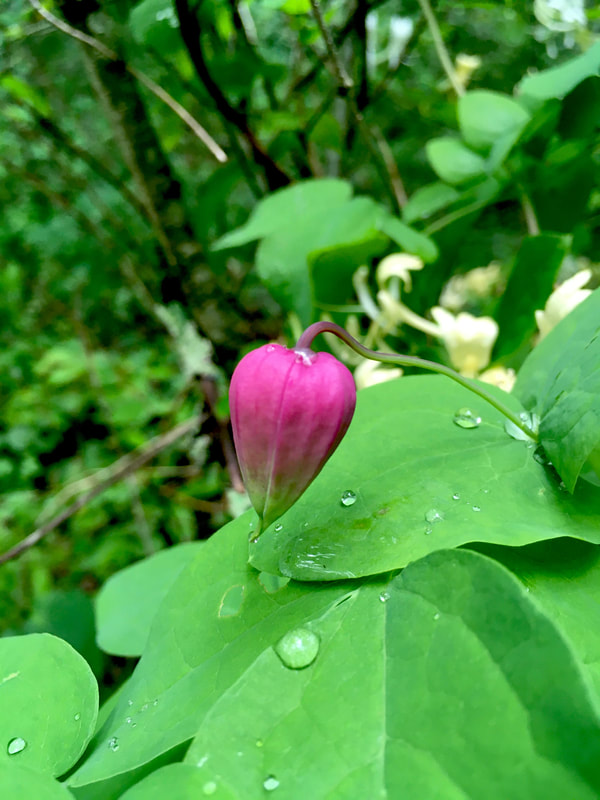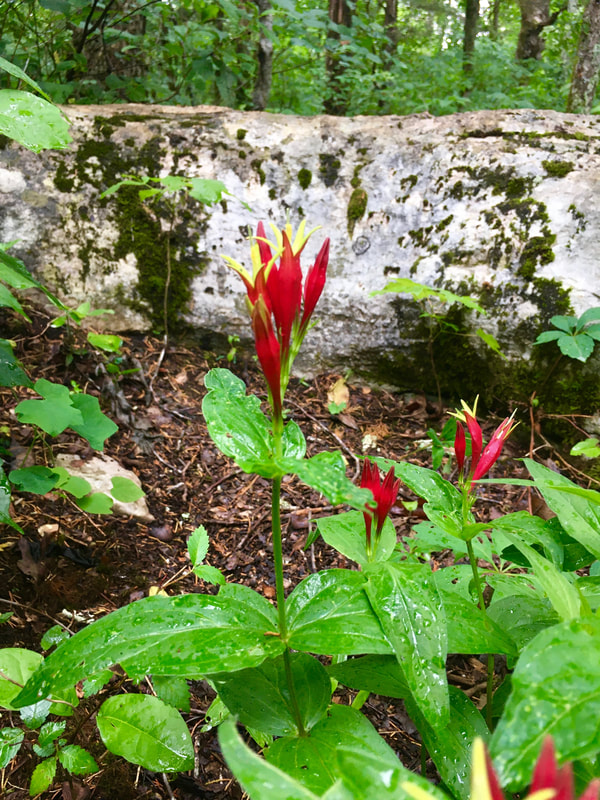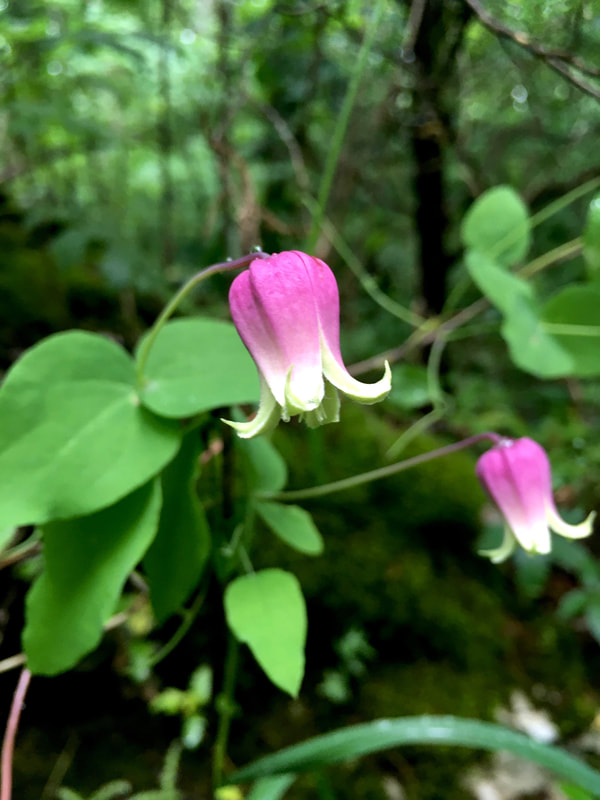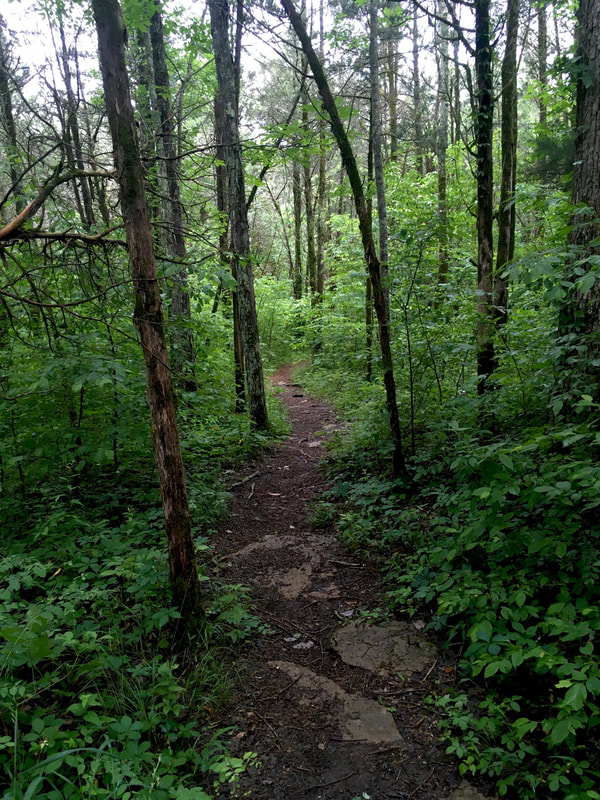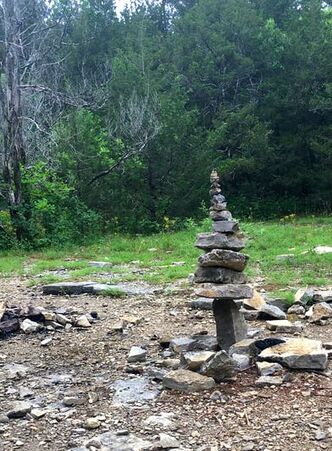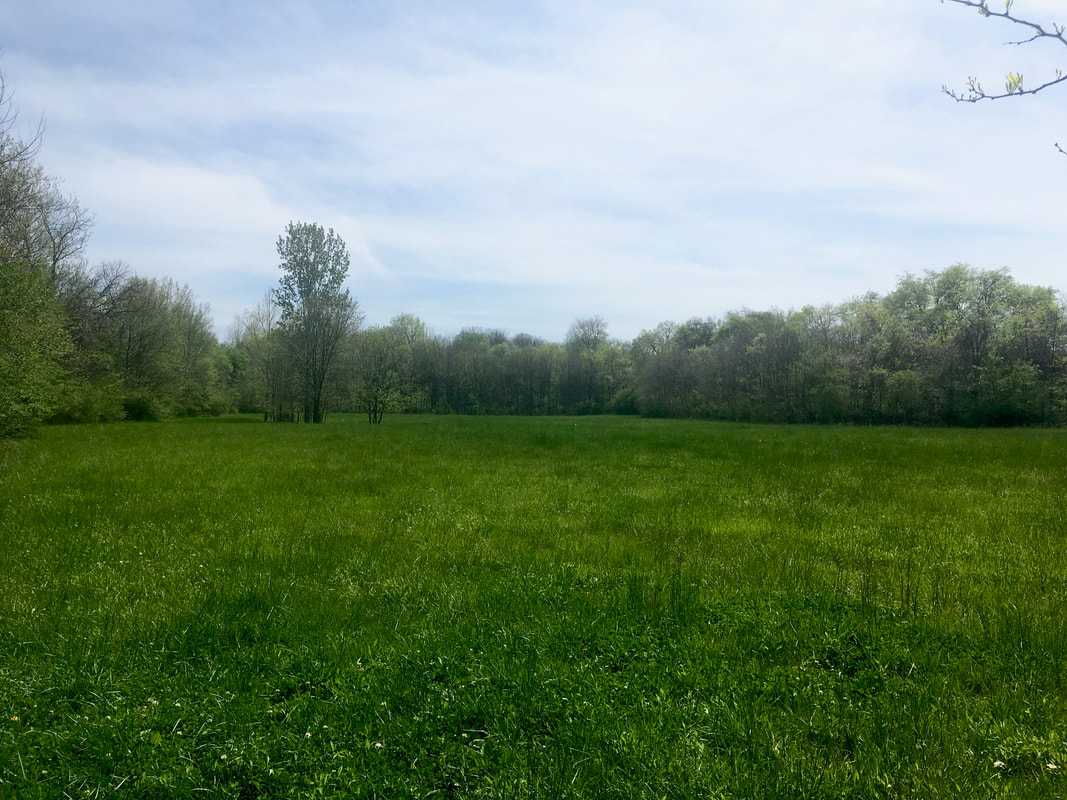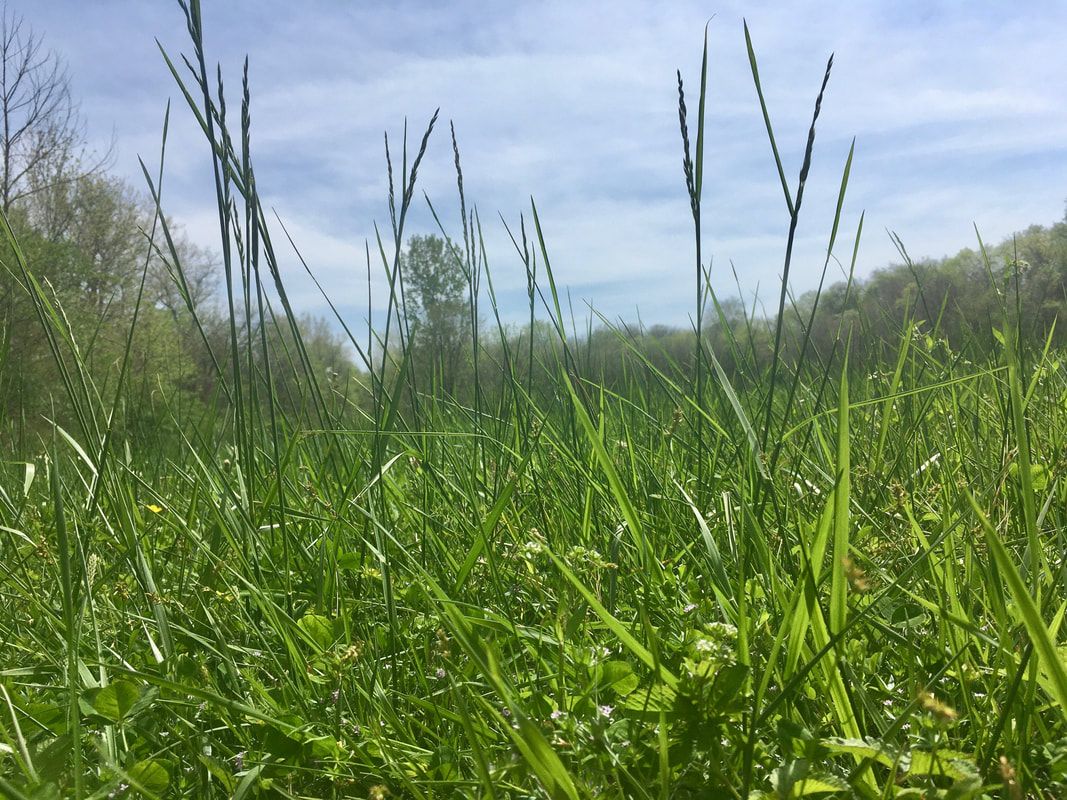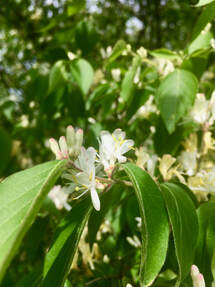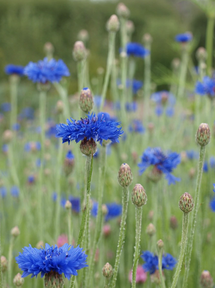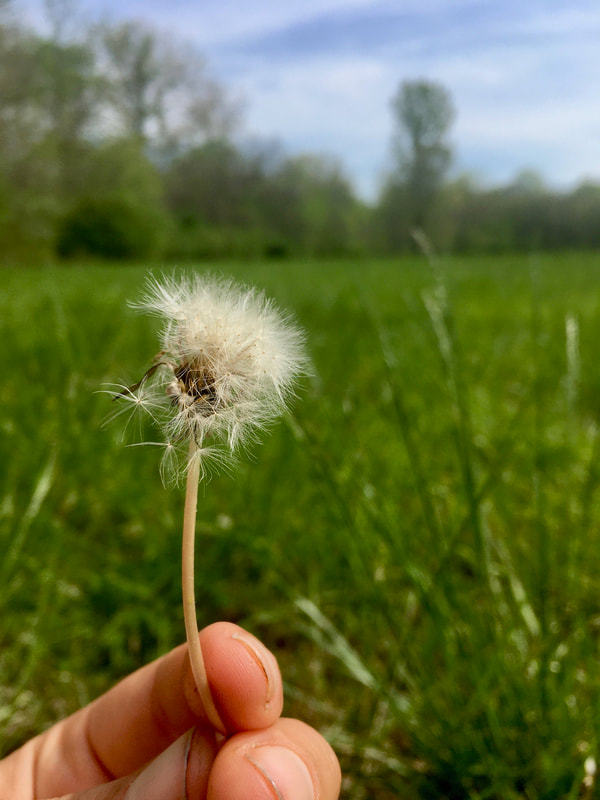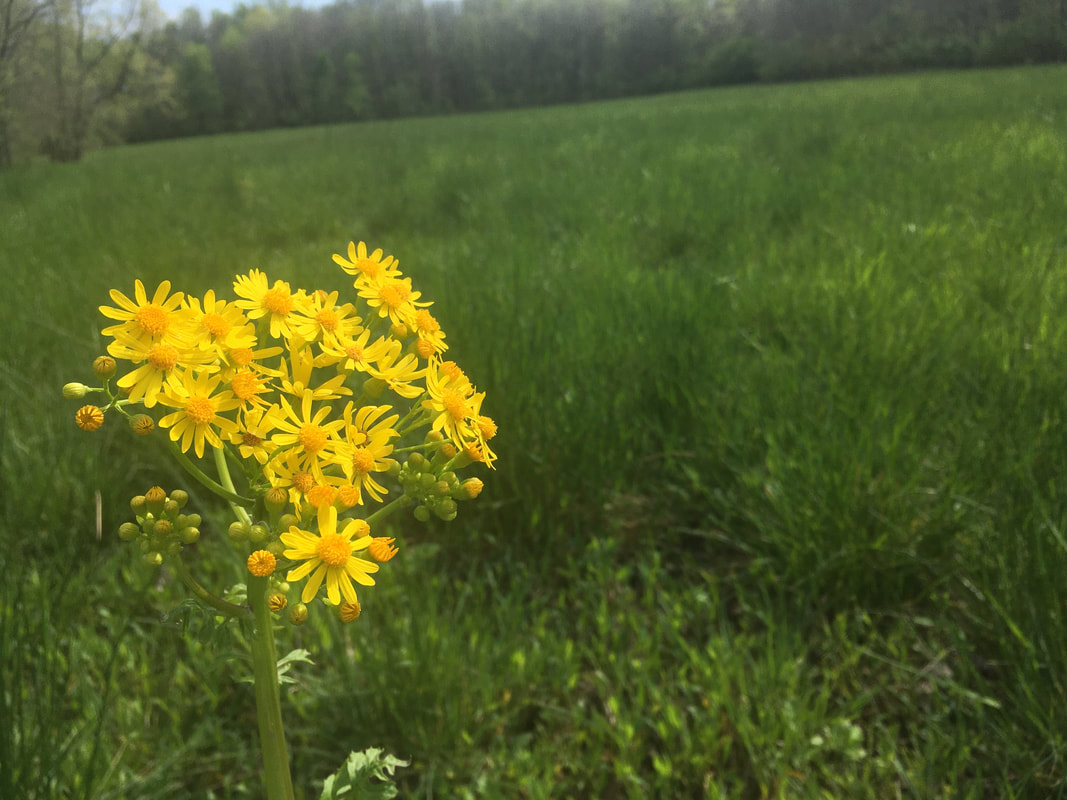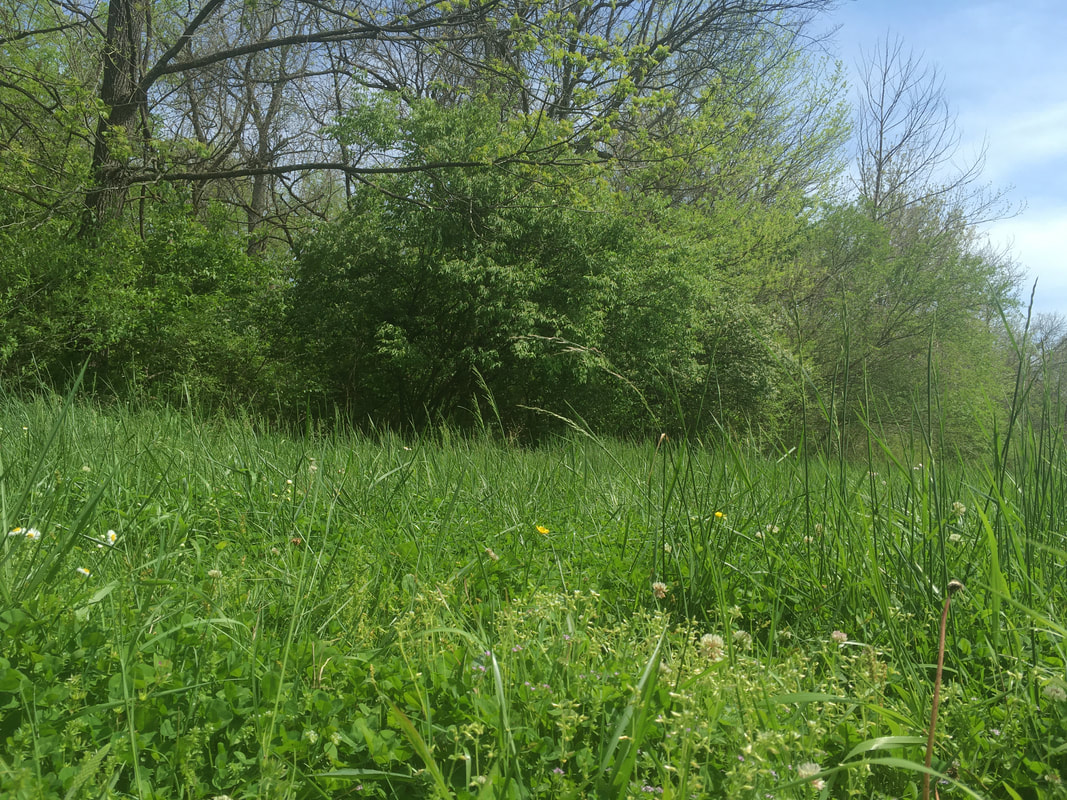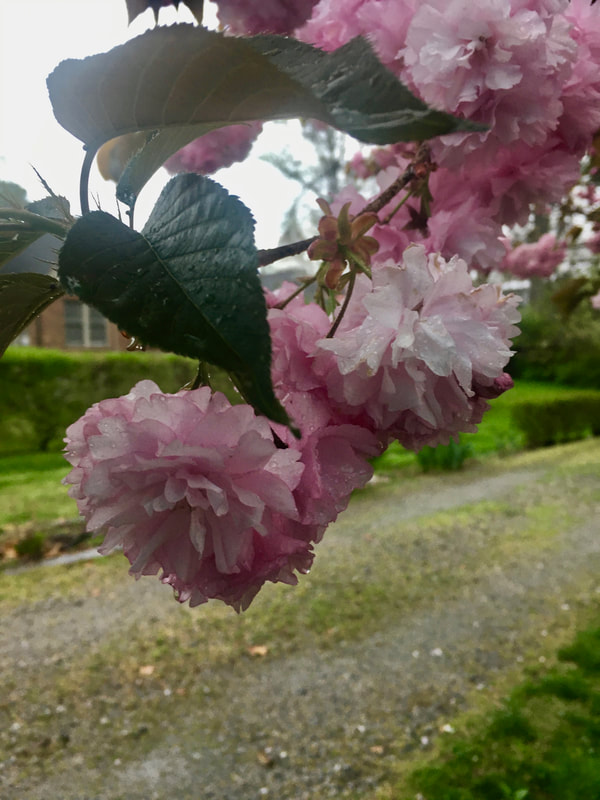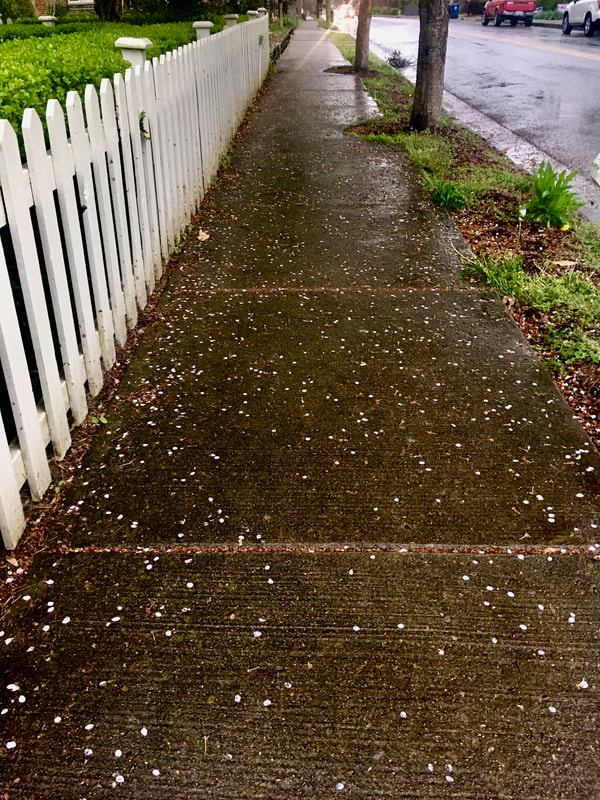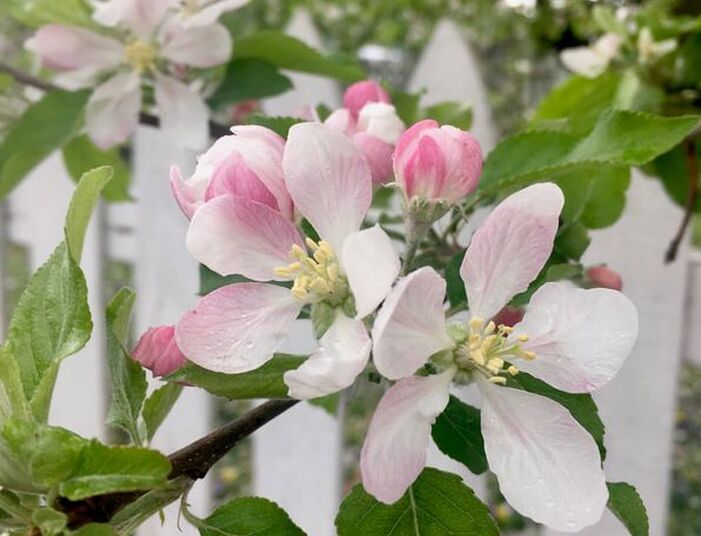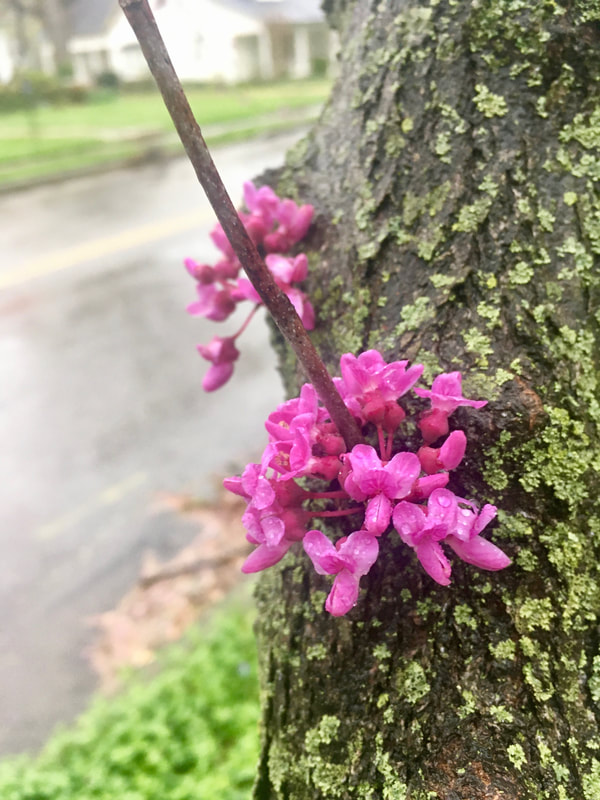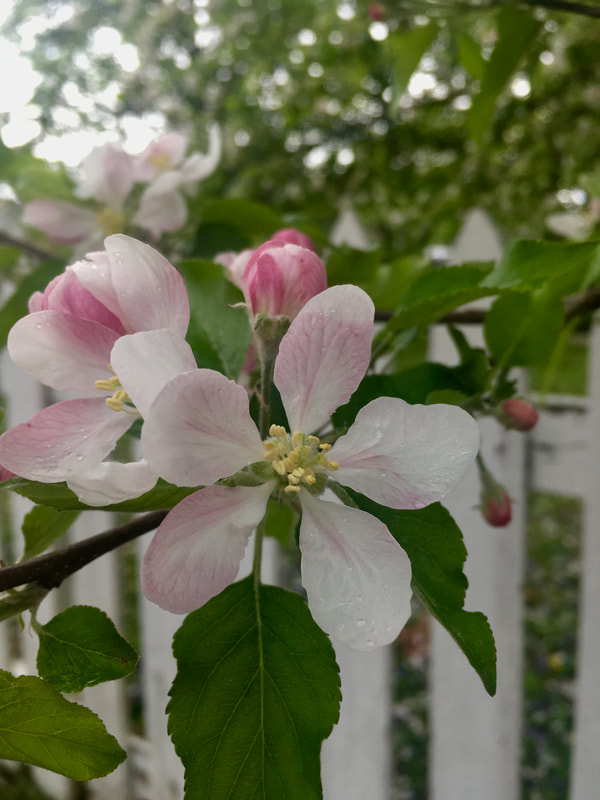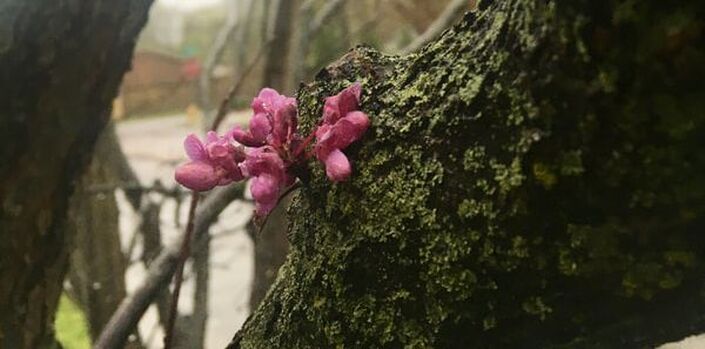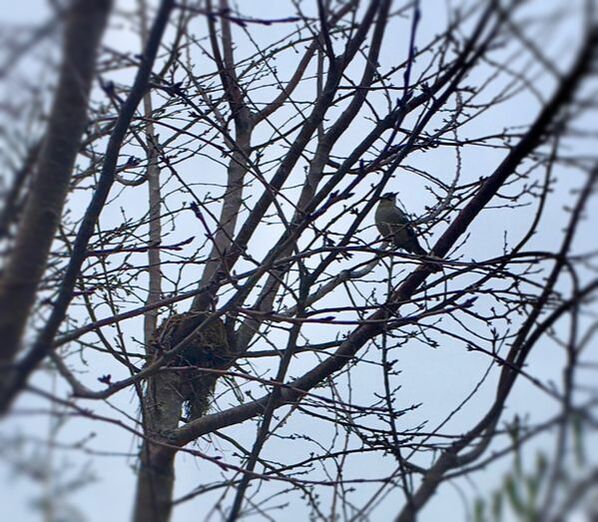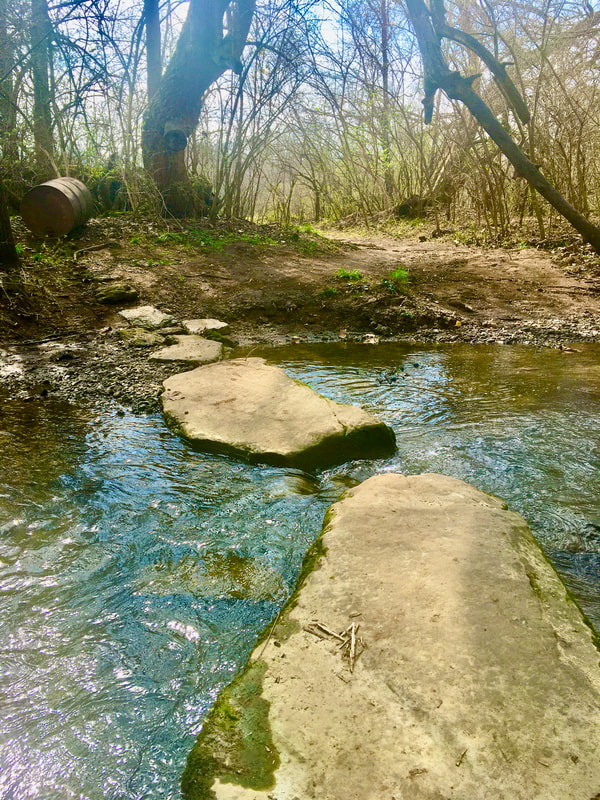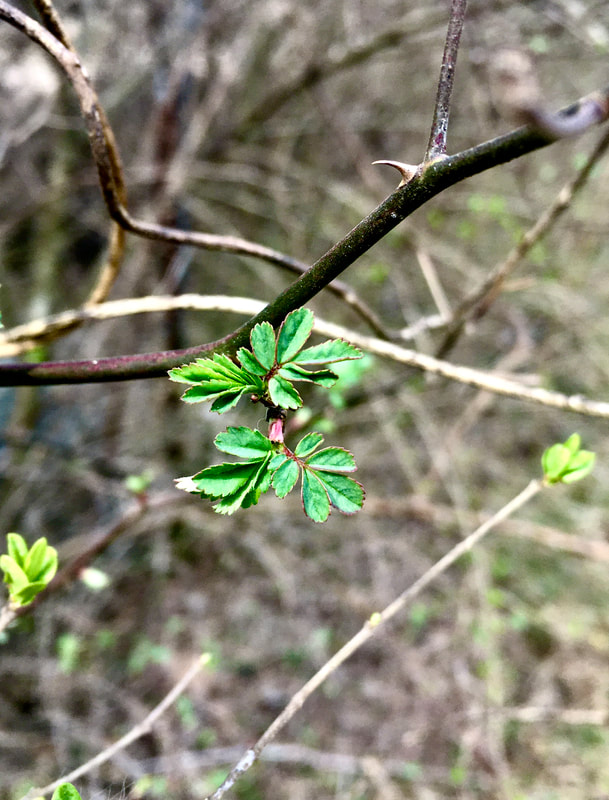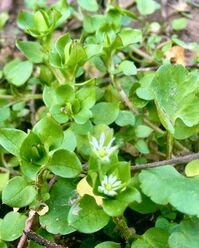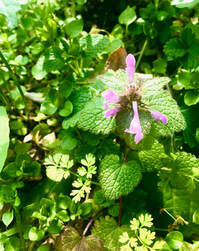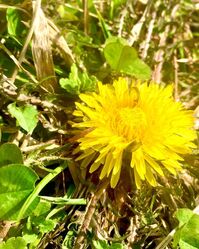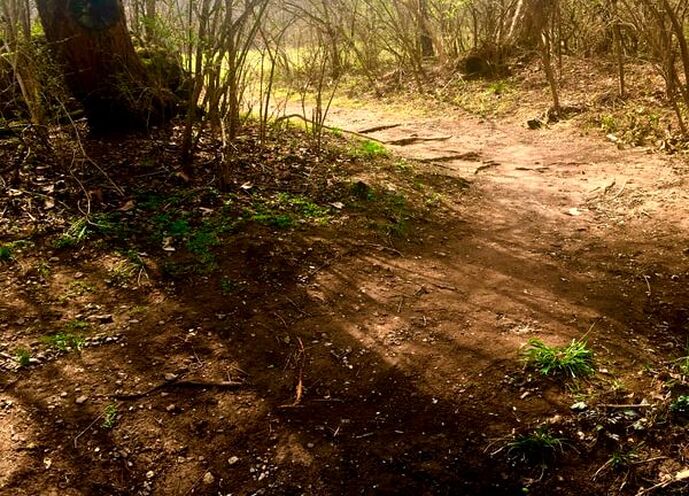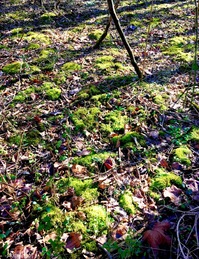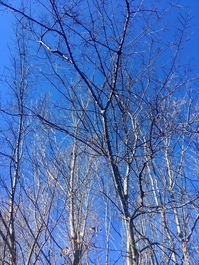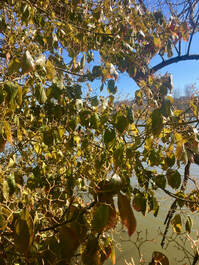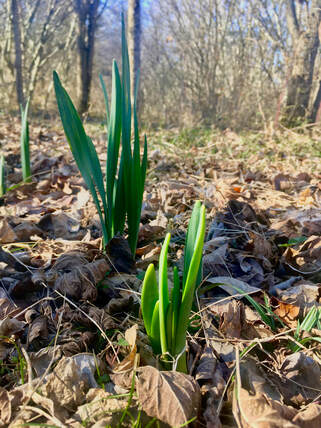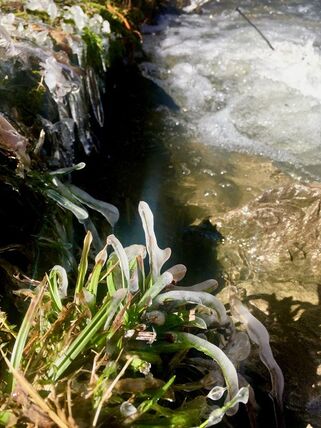 It's windy at my thoughtful spot, truly windy after several weeks becalmed. It's the sort of wind that makes you realize just how accustomed you've grown to the stillness. Stillness in the air is a beguiling thing, a nourishing thing, it is restful and sleepy, and gives permission, somehow, for everything around it to be still too, to be easy. The seedlings grow straight at the sun, effortlessly, without dancing to the wind's rhythm; the birds plot their course from tree to roofline without hindrance from a passing current; small fledglings perch on thin branches, their balance unchallenged by a visiting breeze; and my bike routes are free of headwinds, yet unenlivened by tailwinds. Even thoughts themselves seem to slumber sometimes in the stillness, or perhaps to just step comfortably along from daily duties to daily delights, happy and hobbitish, without much concern for meandering down rabbit trails, or delving into definitions, or racing through possibilities. But stillness cannot last forever. Today the wind has returned, and now I realize just how much I missed it. I saw you toss the kites on high /And blow the birds about the sky; |
| “Hope” is the thing with feathers That perches in the soul - And sings the tune without the words - And never stops - at all - And sweetest - in the Gale - is heard - And sore must be the storm - That could abash the little Bird That kept so many warm - - Emily Dickinson, “Hope” is the thing with feathers |
Spring drew on...and a greenness grew over those brown beds, which, freshening daily, suggested the thought that Hope traversed them at night, and left each morning brighter traces of her steps.”

And when you’ve got it, you want—oh, you don’t quite know what it is you DO want,
but it just fairly makes your heart ache, you want it so!
Planting trees in early spring / We make a place for birds to sing
In days to come. How do we know? / They are singing there now.
Daffodils are budding! Violets bloom! Sparks of brilliant yellow in the grass mark the center of hardy, rusty dandelion leaves (Taraxacum officinale). And my favorite, the creeping speedwell (Veronica filiformis), spreads its ethereal blue flowers over every walkway. These tiny blooms tumble in such happy abundance right under the feet of passersby, yet they never seem to be trampled or crushed, they just bloom on, contentedly.
February brings the rain/ Thaws the frozen lake again...
Flower seeds! And aren't those seed packets beautiful? Since moving to the Greenhouse, I have enjoyed finding walking paths around the town and you can imagine my excitement when, along a path by a creek, I discovered three large raised garden beds. They are prettily situated along the sidewalk, but have been empty for many years. Long abandoned, these sunny, brick lined beds are filled with moss and weeds and debris... but just look at that potential! So we've been mulling over how to plant these lovely flower beds in a way that would bring a bit of sunshine to the walkers and joggers and homes along this little path. Then an email arrived from the beautiful Floret Flowers offering a generous bundle of flower seeds to community flower gardens... and the idea solidified.
"Might I,” quavered Mary, “might I have a bit of earth? ... To plant seeds in—to make things grow—to see them come alive..."
Today on my Thoughtful Walk I have experienced snow in a new way - a snowy town. Never before have I lived so near a town during a snow fall that I could walk into it, straight down the center of unplowed roads. And oh, it's a jolly sight! Only a few other bold wanderers are out and about, and in each one there's a spark of goodwill and gaiety and a hearty greeting that just warms one's heart towards one's neighbors in a very pleasant way. The storefronts are dark and the roads are unburdened by traffic, and, with very little imagination needed, this little town has returned to a bygone age, and I feel the slightest touch of sorrow at the realization that it cannot remain there.
| I'm always astounded, when the snow falls, at the animal tracks that can be found. Whether deep in the woods or on my doorstep, the world of the little creatures, that scurry about their daily lives unnoticed when the ground is hard, is suddenly visible in the snow. Dainty bird prints cover my step with zig-zagged patterns beneath the pine cone bird feeders. I found the tiny hand-prints of a raccoon crossing a log that fell across the creek, the heart-like prints of dozens of deer meandering in the old cemetery, and the widely spaced hopping prints of a rabbit. The one that made me smile the most was the wide, deep trail of a duck's webbed feet, which led to the duck herself, sitting quite perplexedly on a frozen pond. |
Thus, having prepared their buds / against a sure winter
the wise trees / stand sleeping in the cold.
Spring green still glows beneath the white, in a patch of watercress (Nasturtium officinale) still vibrant in a half-frozen creek, or a soft moss cushion clinging to a snow covered stone. At home fragrant narcissus are blooming against my frosty window panes, reveling in the light while protected from the cold. All around me new life seems eager to emerge, but spring must wait its turn today. Today is for peaceful exuberance and wintery good cheer. Today is The Snowy Day.

Green is the grass / and the leaves on the trees;
Green is the smell / of a country breeze...
Who loves a garden loves a greenhouse too...
There blooms exotic beauty, warm and snug,
While the winds whistle and the snows descend
...a great welcome makes a merry feast.
Every traveler has a home of his own, and he learns to appreciate it the more from his wandering.
| There is tremendous satisfaction in slowly planting each footstep in a familiar hollow. I hear the grasses swish, the dried wild mint rattle and hiss, the brown and gold and auburn leaves crunch with every step. There's the friendly chatter of crickets, a steady trilling hum that I have missed, and the spurts of familiar bird song - cardinals, house wrens, the hollow drilling of a woodpecker. I can smell wood smoke from my thoughtful spot today, and slowly composting leaves, and the warm scent of sunshine on damp moss. The maple by the back door is splendid gold, and its ivy covered trunk, the darkest of indigo greens, makes the most beautiful contrast. I love this mingling of the transient and the evergreen. It's a bit like home and me - the one |
|
“Hope” is the thing with feathers - / That perches in the soul -
And sings the tune without the words - / And never stops - at all -
| But best of all, this homely Thoughtful Spot is filled with chatter, laughter, and the family who, far more than my beloved woods, make this little corner of Middle Tennessee my home. And though I know they have heard over and again all my stories of how exciting and different these wandering thoughtful spots have been over the past months, they listen to me generously. I marvel at how far away and wonderful those places now seem, and at how real and vibrant is this present moment. |
I know not all that may be coming, but be it what it will, I'll go to it laughing.
It's a dangerous business, going out one's door, you never know where you might be swept off to... this year I've been swept off to many a thoughtful spot, and seen many a wonder, and walked Providential paths that I wouldn't trade for anything. But on this sunny day of a fleeting September I know for sure that it's this thoughtful spot at home, and those who share it with me, that will always hold my heart.
I'm sitting here with the splendid beams of a late summer sunset spreading across my page, and a raging wind billowing in from the sea. This little bench is a thoughtful spot I have visited frequently over the past month, but this evening is the last time I will see it awash with gloaming light, I am leaving the Channel Islands tomorrow. The ocean is all aglitter. As I've explored this tiny island it seems to me that the sea, not the land, has the greatest character here. It rushes into caves, plays around great monoliths, warms itself on sun-baked black pebbles, and ensures that there is never really silence, it is always crashing and chattering just a stone's throw away.
But there are other companions here at my thoughtful spot this evening, besides the happy sea and the regal light, there are those most homely and peculiarly comforting of creatures, the cows. They meander and mumble and lift their long-lashed eyes as I pass by, contemplatively. They are gentle, and they make me think of home.
God made the petreous rocks, the arboreal trees...
The movements of the sea, the wind in boughs,
green grass, the large slow oddity of cows...
The gorse (Ulex europaeus) is blooming here and there, little golden clusters on ferociously prickled shrubs. Those who have lived here for years have told me that, no matter what the season, the gorse is always in bloom, even in the midst of rainy, icy winters, or windy, late summer droughts like this one, at least one or two sunny flowers can be found. No one today seems to think of gorse blossoms as a wild edible and there is very little information about its potential uses, or potential dangers. But an old wildflower guide claims that gorse flowers and buds, tinctured in vinegar, are an effective remedy for coughs and sniffles, and have a pleasant flavor of vanilla and almonds.
When Gorse is out of blossom, then kissing is out of fashion...
Another fiercely thorned shrub grows in abundance around this thoughtful spot, the wild blackthorn (Prunus spinosa). Just now it is covered in powdery blue sloes, and local residents are excitedly planning the making of sloe gin to be ready in time for Christmas celebrations. Though folklore surrounding this angry-looking plant is often ominous, the sloes have been a wild-harvest staple for centuries, and studies have shown that they are anti-inflammatory, support healthy digestion, soothe sore throats, and ease winter colds and flus. Fairies are said to live in both these wild, windswept shrubs, kindly little folk among the sunshine-colored blossoms, and mischievous ones perched on the sharp blackthorns.
Mountain blossoms, shining blossoms, / Do ye teach us to be glad
When no summer can be had, / Blooming in our inward bosoms?
Ye, whom God preserveth still, / Set as lights upon a hill,
Tokens to the wintry earth that Beauty liveth still!
The sea is gushing in frothy rivulets from the cliff-sides. As it tumbles back the surrounding water is actually turquoise, an almost unearthly color that no photograph can capture. Its roar is deafening and cheering, frightening and friendly at once. The wind is strong, but it's odd how an ocean wind feels so different from that wind on the moors only a few short months ago. Here it is gustier, unpredictable, less constant and persistent. I leave this thoughtful spot tomorrow, and I will miss this sea. But there is oh so much joy in the prospect of returning soon to a more familiar corner of this glorious creation...
I must go down to the seas again, for the call of the running tide
Is a wild call and a clear call that may not be denied;
And all I ask is a windy day with the white clouds flying,
And the flung spray and the blown spume, and the sea-gulls crying.
Many have thought in this Thoughtful Spot. Great minds have pondered wondrous things beneath this old London plane tree (Platanus hispanica). Somehow I think their thoughts have lingered, and have changed this place. Is that possible, I wonder - can the thoughts, conversations, ideas seep into the fiber of a place and leave some vestige of their power when the thinkers have long since gone? I doubt it, yet my imagination likes it so. And if ever there were a place to make one believe such a thing, it is this place.
I wonder anyone does anything at Oxford but dream and remember.
...that peculiar air of Oxford -
the air of liberty to care for the things of the mind...
All that is gold does not glitter/Not all who wander are lost...
The sweetest thing in all my life has been the longing... to find the place where all the beauty came from...
It’s been raining most of the day, which has been just right. I was thinking a moment ago that this place would not be right in the sun, it’s so gloriously alive in the rain and mist. But then the sun came out, and it was like a new world had been lowered down for a moment and swallowed this one, then it was gone. The sunlight is resting on a distant hilltop for a moment, racing now across the land, here for a fleeting instant, then off again. The cloud's shadows whisk the light along, but never for more than a moment or two, it always returns.
And the peace which I always found in the silence and emptiness of the moors filled me utterly.
One or two fireweed torches (Chamaenerion angustifolium) are just beginning to bloom, fields of them are in bud. Between those blooms and the heather (Calluna vulgaris), I imagine these moors will be a sea of pinks and purples in a month. Birds whose names I do not know squabble among the ripening wild blueberries, and the wind-sculpted hawthorn trees (Crataegus monogyna) are covered in green berries. The clouds are low, or perhaps the land is high and closer to them, yet they do not settle as dreamy mists in the hollows and dells as I would have expected. These clouds alternately float and race just over my head, like an ever-changing roof of painted greys.
... A lonely moor / silent and dark and tractless swells,
The waves of some wild streamlet pour / hurriedly through its ferny dells.
Stone walls and old stone homes are etched into this land, not built upon it. They cut, in beautiful disorder, through the coarse, sponge-like grass, through the sturdy heather, the deepest imaginable moss, down to the sandy soil beneath. It looks as though these stone structures have grown out of that soil.
So sweet, so soft, so hushed an air;/And, deepening still the dream-like charm,
Wild moor-sheep feeding everywhere. /That was the scene, I knew it well;
I knew the turfy pathway's sweep,/That, winding o'er each billowy swell,
Marked out the tracks of wandering sheep.
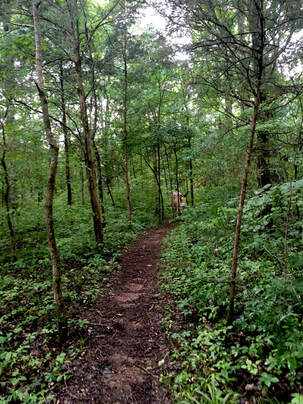
I’m in familiar forests today. A trail that I’ve walked several times before is just visible amidst a jungle-like chaos of weeds and wildflowers and undergrowth, the river is misty and lazy down a cliff on one side of the path and a canopy of green and birdsongs overhead obscures the sky, but not the sunlight. And best of all, I’m not wandering this thoughtful spot on my own. Chattering along the trail before and behind are my family, the best people to share in a thoughtful walk.
Flowers were the sun and fiery spots of sky strewn through the woodland.
Countless daisies (Leucanthemum vulgare) bloom along the way, and purple explosions of wild bee balm (Monarda fistulosa) are dotted in little clusters. That surest scent of spring, the perfect harmony of moss, wild privet, and honeysuckle are in the air. All three plants line this trail in abundance, the viney honeysuckle (Lonicera periclymenum) and privet shrubs (Ligustrum vulgare) almost touch across the path above my head, creating an archway of flowers. I wish I could blend a perfume of that scent!
And so with the sunshine and the great bursts of leaves growing on the trees, just as things grow in fast movies, I had that familiar conviction that life was beginning over again with the summer.
Indian Pinks (Spigelia marilandica) in yellow and scarlet pop up here and there, tucked in little rocky crevices rocking into the steep slopes or in between the gnarly roots of old trees. And Mum has made a new wildflower discovery- a small bell-shaped bloom on a vine, perfectly shaped with thick yellow petals turned back at the tips like a fuchsia, in the loveliest shade of pink. It’s a wild clematis variety, (Clematis pitcheri) and not a very common one. Its vine and leaves look similar to its cultivated relatives, but its unique blossom, with thick, sturdy petals, give it the common name Leatherflower.
…there are so many things that I have never seen:
in every wood in every spring there is a different green.
At home the first day lilies are blooming, the roses are just passing their prime, and the vibrant green of early summer is beginning to overtake the land. I’m glad to be returning there when I leave this thoughtful spot. It is good to turn my steps towards home for a while, and delight in the familiar companionship of family. Particularly as my next Thoughtful Spot will be very far away indeed…
... April, dressed in all his trim,/Hath put a spirit of youth in everything.
There are few delights comparable to laying in an un-mown field of spring grass. No stalk is grown enough to be prickly or uncomfortable, and the tiniest of flowers are hiding beneath the Johnson grass and clover. There are wild strawberries, and violet wood sorrel (Oxalis violacea), and the first of the dovesfoot cranesbill (Geranium molle), and two dainty Venus looking glass stems (Triodanis perfoliata). And the world looks so wide and different from this grassy vantage, I imagine this is how the little rabbit I passed on my way here might look at this field. Isn't it odd how we tend to love the idea that we have the ability to see the world the way birds do, yet we rarely stop to look at it the way squirrels and rabbits do. Don't you think their view is quite lovely too?
Spring won’t let me stay in this house any longer! I must get out and breathe the air deeply again.
Tiny green aphids crawl across my page and onto the magenta bud of a vetch flower (Vicia americana). I love it when the vetch begins to bloom. Though I hear the sounds of heavy equipment nearby as work proceeds on a new highway that I fear will cut far too close to this wild haven, the sound of the wind in the trees is louder, and the chatter of birds and squabble of squirrels is nearer, and I am grateful this haven exists. The mundane and the spectacular of creation thrive together in this thoughtful spot, awaiting marvelers. What a perfect gift is spring.
And stands about the woodland ride / Wearing white for Eastertide.
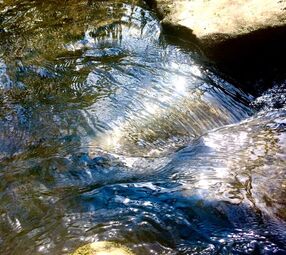
My thoughtful spot today is a lovely corner off a trail behind a neighborhood. Long ago some kind soul set stepping stones across this busy creek, or at least it looks as thought is was long ago, for the stones are very deeply set and covered in moss. And there is a quiet, thoughtful bench, and a picnic table, slightly the worse for weather, yet somehow made friendlier by that.
Then was winter shaken, and fair was the earth's embrace.
Chickweed (Stellaria media) and henbit (Lamium amplexicaule) and blue creeping speedwell (Veronica repens), nestled deep in oft-overlooked obscurity, herald in their tiny, joyful way the sunny days and warmth ahead. And a single, bright faced dandelion (Taraxacum officinale,) on a tiny stem is the first brave one of its kind to emerge in this little thoughtful spot.
Nothing ever seems impossible in Spring, you know.
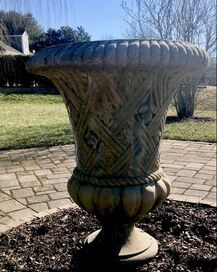
Glory be to God for dappled things!
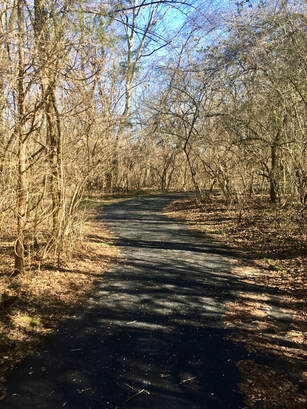
It was one of those days when...
it is summer in the light and winter in the shade.
... a new year, full of things that never have been...
Though ice still clings to the grasses around the mouth of a little culvert nearby, and the bushes are still white with frost most mornings, still it seems that perhaps, slowly and happily, the world is indeed beginning to quicken.
Do You Have a
Thoughtful Spot?
Many current trends in natural health focus on ecotherapy and shinrin-yoku, or forest bathing, reiterating with scientific studies and medical terminology something that Winnie the Pooh taught us many years ago: we all need
a "Thotful Spot".
We need a little corner surrounded by nature where we can sit and be still, ponder and pray, and observe closely the beauty around us.
These posts are musings and meanderings from my Thoughtful Spots, interspersed with occasional ramblings about herbal happenings at the Greenhouse and monographs of my favorite medicinal herbs.
I hope you'll join me in finding a Thoughtful Spot, visit it often, record the things that make you marvel, and remember,
"the world will never starve for want of wonders..."
- G.K. Chesterton
Archives
May 2024
February 2024
January 2024
August 2023
September 2022
August 2022
July 2022
June 2022
May 2022
April 2022
March 2022
February 2022
January 2022
December 2021
November 2021
October 2021
September 2021
August 2021
July 2021
June 2021
May 2021
April 2021
March 2021
February 2021
January 2021
December 2020
November 2020
October 2020
September 2020
August 2020
July 2020
June 2020
March 2020






















